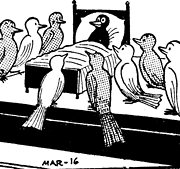|
There were plenty of good games released this year. My base "good" score (based on my criteria) is a 70 and I scored 52 games 70 or higher last year, 48 games this year and I'm not finished yet. My top 50 will likely arrive before I go on a trip for the holidays, so I have around 10 days to play the remainder of what I intended to play and then do writeups.
|
|
|
|

|
| # ¿ May 10, 2024 21:00 |
|
My list is 50 + honorable mentions, I might break it up into two posts because last year I think I hit the character limit -_-
|
|
|
|
What do you even have to lose at that point in the game? You don't have any runes or even the capability of leveling up. Just drop down that tutorial hole.
|
|
|
|
i have plenty to say about most of the games on my list i'm still having ranking activity though in these final days of the year... a new entry in the top 10 emerged...
|
|
|
|
What a year! Uh not for the world but for games. But it's tiring to say that every year. Uh not aout games but the world. Let's just talk escapism. Last year my list had 14 games scoring 80 or higher. This year? 18. And while no game was as all-around incredible as my GOTY of 2021, certainly there are all-timers on this list. How good was 2022 from a standpoint of supreme software selection? I think you could easily make a couple of completely different top 10s out of this list of games that I -didn't- get to this year: Card Shark, AI: The Nirvana Initiative, Atelier Sophie 2, Bayonetta 3, Freedom Planet 2, Not for Broadcast, OlliOlli World, Sifu, Powerslave: Exhumed, Monark, Far: Changing Tides, Ghostwire: Tokyo, Citizen Sleeper, Stranger of Paradise, Rune Factory 5, Weird West, Moss: Book 2, Stanley Parable Ultra Deluxe, Haiku the Robot, Gedonia, Soundfall, The Centennial Case, Drainus, Hardspace: Shipbreaker, Rollerdrome, Fobia: St Dinfna Hotel, Jackbox 9, Yurukill, Time on Frog Island, Mothmen 1966, Soulstice, Metal Hellsinger, Lego Bricktales, Critters for Sale, As Dusk Falls, Hell Pie, Wayward Strand, Bear & Breakfast, Frogun, Thymesia, Spark the Electric Jester 3, Islets, I Was a Teenage Exocolonist, Shin-Chan: Me & the Professor on Summer Vacation, Trombone Champ, Shovel Knight Dig, Grounded, Moonscars, Asterigos, A Plague Tale: Requiem, Mario & Rabbids 2, Somerville, Monochrome Mobius, Evil West, Front Mission 1st, Gungrave GORE, Beneath Oresa, The Entropy Centre, Harmony's Odyssey, Lucy Dreaming, The Excavation of Hob's Barrow, Serial Cleaners, Curse Crackers, Lost in Play, Symphony of War, Freshly Frosted, FixFox, Sokobos, Blast Brigade, Patrick's Parabox, Nightmare Reaper, and Kharon's Crypt. Obviously, I missed out on a lot of great titles. But not for lack of trying, as I played, in total, 65 2022 releases this year. Before anyone says "what about"! Here's what I had no interest in playing this year: Dying Light 2, Tiny Tina's Wonderlands, Horizon: Forbidden West, Triangle Strategy, Babylon's Fall, GT7, Rogue Legacy 2, Evil Dead the Game, The Quarry, MH Sunbreak, Saints Row, Immortality, Ooblets, The Diofield Chronicle, Gotham Knights, New Tales from the Borderlands, Star Ocean 6, Sonic Frontiers, God of War Ragnarok, Pokemon Scarlet/Violet, The Callisto Protocol, Midnight Suns, Hello Neighbor 2 (or any Markpilier-bait for that matter), and High on Life. Still, I'm sure I missed something incredible that isn't in either of those two paragraph piles of games. That's how unfortunate indie visibility is these days. But hopefully my list and many others can shine a light on games people haven't heard of or would like to know more about.    Atlus truly made something special for the fifth mainline game in the SMT series. While IV felt like an odd sidestep that lacked a clear identity, V is absurdly confident. It's so confident that it's willing to trick the player into thinking it's going in a Persona-like direction, only to cruelly (but not unexpectedly) whip that rug right out from under your feet. Veteran SMT players knew to jump, then looked down upon landing to see the newbies and reviewers lying flat on their faces. In one of the more interesting settings I've seen for a JRPG, slaying god is not really the point. In fact, according to the deities of this game, the biblical god is already no more. What is left behind is essentially a power battle of the gods, with humans merely the ants scurrying underneath. What happens to the humans, the gods don't particularly care. When the player character fuses with a demifiend to become a Nahobino, the gods' only interest with them is because of their god-like power. That leaves the fate of the human race somewhat strange, as what is really being decided is the ultimate fate of the nature of the world. Will it become survival of the fittest? Will it take shelter under a protective authority? Will things remain as is? Or is there another way? These choices are largely made right at the end of the game, although that last option takes a little extra bit of doing. Which means for the most part, you don't have to worry about micromanaaging all your character's dialog choices, like, say, Strange Journey. Just answer however you feel. SMT mainline games aren't necessarily known for having the kinds of creative and imaginative dungeon themes as its spinoff series, so it was a very pleasant surprise for me to find that SMTV went the Skyward Sword route: the ENTIRE GAME is a dungeon. You travel through a ruined Tokyo, with each distrct its own cleverly designed dungeon of wasteland debris and collapsed buildings to scale. It's a really cool idea; the aesthetic works perfectly for the notorious low-ceiling Switch hardware, and the architecture is used to great effect to create verticality and tons of little nooks and corners to hide There is still demon fusion and negotiation of course, and everyone's favorite Press Turn system is back. These things are such a given that I almost don't feel they need commenting on compared to everything else that SMTV does that is so cool. But I will say two things: 1) the Essence system is an absolutely incredible innovation for the series and makes building your party an extremely flexible and frictionless affair. You'll always be able to set yourself up for success against bosses, as long as you've done some fusions and gathered some essences. 2) Every checkpoint you find has instant access to fusion, shopping, saving, party healing, and fast travel. This makes for a better pick-up-and-play experience than IV attempted to be on the 3DS (and bear in mind I did -like- IV!). Going from one checkpoint until you reach the next, you'll get a lot of battles in, pick up some sidequests, level you and your party up a bit, find some essences and Mimans, and be in a position where that next checkpoint is gonna be a nice time to do some new shopping and fusing. It's a very, very successful and addictive gameplay loop. Will SMTV ever get a PC release? It'd be nice, because I'd like more people to get their hands on this game. It runs sub-adequately on the Switch with lots of framerate drops. But even if it remains bound to the Switch, it is still absolutely worth getting your hands on it. It's one of the best JRPGs in years and definitely the best thing Atlus has put out on a long time.    Hi. Did you have a fondness for Another World? Play The Eternal Castle immediately. Just go do that thanks. Everyone else: holy poo poo this game is loving cool. Coolest thing I played this year. A jaw-droppingly beautiful blend of rotoscoping and CGA 4-color palette work, Eternal Castle is nothing but awesome setpieces and... well, the combat was bad in Another World and the combat in Eternal Castle is at least servicable and OK, so... I mean I didn't hate the combat, and that's the only thing that would have dropped Eternal Castle in my scoring. I guess visuals really can carry a game a long way. No but seriously, the gameplay is fine, which allows the incredible style to take front and center. Setpieces abound in this game, from fighting through a bar, to running for your life through the inky darkness as monsters chase you, strange and hyperkinetic boss encounters, just a wild loving trip. Every new level of this short-but-very-sweet game is a surprise and a delight. If you don't like 'cinematic platformers' though? Idk, just watch a Let's Play of it I guess? 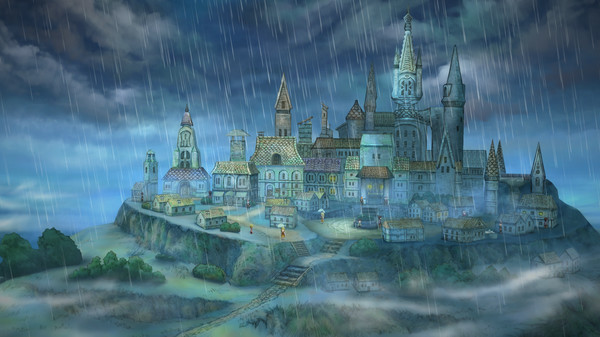   Until the rapid run of awesome RPGs that crammed into this second half of the year, my top RPG this year was a 3DS remaster (I guess that makes sense, since a PSP remaster is in my top list, after all). The Alliance Alive comes from the somewhat beleaguered FuRyu, known as much for their flops (Monark, The Legend of Legacy) as their successes (Caligula Effect 2, Lost Dimension). When FuRyu does put the effort in, though, it pays off, and it pays off for The Alliance Alive. Some time after a cataclysmic event, the world's been separated by walls and chasms, as demons rule over the remaining humankind on Earth. One of their higher-ups decides to see what life is like in the human's world (with her butler in tow), and joins up with a couple of humans from a rebel squad, as the four of them learn about the true nature of the world (as will happen in a JRPG) and begin to build the titular alliance and fight back against their uncaring overlords. (I may have some details foggy since I played this back in the summer.) What excited me first about TAA was its SaGa style combat, and yep, it's SaGa. Sparks with new skills, skills that improve, nebulous and seemingly random stat gains after battle. There aren't Life Points in this game, but if a character goes down, enemies can continue to wail on them and this lowers their max HP until you the next time you rest-- the tradeoff being that you can revive them with any healing you have (like even a very basic heal spell will do the trick). The interface in particular reminded me quite a bit of Minstrels Song which immediately biased me towards liking the game. There's also a limit break of sorts that does massive damage but breaks the weapon you're carrying (characters can carry two into battle), so it's a major risk/reward scenario... either holding on to two weapons you're proficient in to have a range of skills available, or having a throwaway weapon just for the purposes of that big hit. Another interesting thing is the formation feature. Most JRPGs have formations, but you will learn formations over the course of the game that confer bonus stats based on positioning, and it's not always a tradeoff! Some you get are just rad. You gain additional formations (like you advance in a lot of ways) through establishing relations with the Guilds. There's a Guild for various categories, such as the Scout's Guild, Blacksmith's Guild, etc. And each one levels up as you add more NPCs to your ranks. No, this isn't Suikoden, but you can recruit a large number of NPCs in the world to joining your resistance, and then assigning them to a guild. As the guilds level up, you will unlock more items from shops, perks for the party, etc. Characters also have Talents which are passive perks you can unlock with Talent points gained from battles. Alliance Alive isn't the most expansive RPG (it was designed for a handheld system and its limitations, after all), but it's a fun adventure with an interesting cast, cool combat and old-school storytelling.    Certainly the most addictive game in my entire list (outside of maybe two specific titles in my top ten) was Dysmantle. 10tons' zombie survival game is not really so much about the zombies as it is completely obliterating people's houses and using the debris to craft as you level up and gain more recipes for stronger weapons to break harder materials and slowly make your way around the open world. The open world is not super exciting and has a bit of what I call "Generation Zero" syndrome where every house looks copy-pasted and the biomes are only vaguely different from each other outside of a hot zone and a cold zone. But getting stronger and breaking down larger and heavier things was a really satisfying loop. Like Katamari Demacy but instead of you getting bigger, the stuff you're able to destroy gets bigger. They've since added new DLC this year, but, I got 25 solid hours out of this and I don't want to get hooked on it again. Also shoutouts to Epidemic Sound for providing them the tune they use when you are on the train, 'Safe Trips', a song I've downloaded off of Epidemic Sound myself when I was thinking of using it in video content along with a dozen other 'sounds-like' pop tunes.    One of the more pleasant non-2022 games I played, a point and click adventure played with the gamepad that shows heavy Lucasarts influence while still being its own thing. Cleo wants to be an adventurer and gets her wish but it's a little more than she bargained for-- what is this am I writing the back of Goosebumps books now? gently caress I'm a hack. Anyway, it's nice looking, the puzzles are solid, the story is a fun adventure that even travels to the afterlife, and you can tell that the devs are fans of Monkey Island. 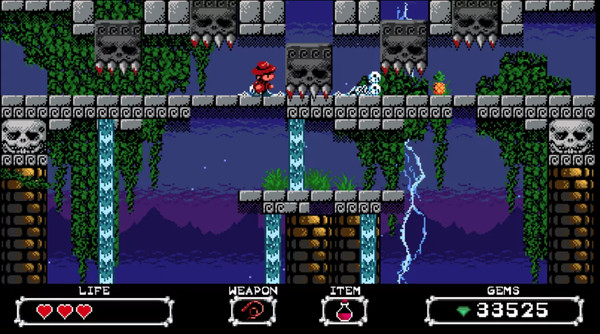 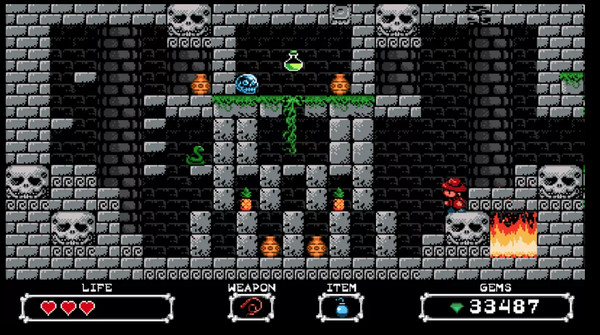  One of the more suprising games I discovered and really enjoyed that I've heard almost no one talk about, Sydney Hunter is sort of an arcadier La Mulana, nowhere near as brutal on the traps or as thinky on the puzzles, more just an explorey game in tombs that has some very light Metroidvania upgrades that you can use to go back to earlier levels and find more stuff, as well as explore more of the overworld map to get into new levels (which require a certain number of collectable skulls, so you also get some N64 collectathoning in there). As a treat the bosses are inspired by Mega Man boss design. And if you can handle the brutally shrill saw lead, the chiptune music is pretty good.    Though this is a game in my honorable mentions list, I do have quite a bit to say about it. Etrian Odyssey is a series I really love, SORT OF. See, the games have this illusion of all being at a consistently high quality, but because of the nature of the class builds from game to game, the music compositions always changing, the world design hopping back and forth between forever descending down vs open world, it's got a lot more peaks and valleys than you'd expect, or at least, you'll get some people who really love one over another. For example, I love EO3 the most, and EO4 I was cold on, despite most people loving EO4 -- although, just to be clear, EO4's first half battle tune is one of the greatest battle tunes of all time, easily easily easily. What makes EOV an upgrade over 4 is not just its return to the stratum-based dungeon diving (because honestly, the open world, despite adding more friction to the in and out nature of the game, was just a means to an end anyway), is its unique party builds. There are some wild classes in this one, and though not all of them work out, they are very interesting to experiment with and see what synergizes with your group. The closest to traditional classes are the punching Pugilist, the spellcasting Warlock, and the tanky Dragoon. But others include the Rover, who summons wolves and falcons onto the field to attack and heal/support, or the Harbinger, which fills the battlefield with miasmas and then attacks through the miasma to deal ailments along with damage, or the Necromancer, who summons the dead and then sacrifices them to spread buffs and debuffs or deal massive damage. Atlus has taken past classes, pulled them apart, rearranged everything, and remixed them into these new classes, and it really changes up the kinds of configurations you can put together, and what works best. I don't love V as much as III, but I do quite like it. I think the more experimental nature of the classes pays off as you'll likely have one or two new favorites to go with the traditional archetypes, and you can definitely break the game over your knee if you try. That said, some bosses were clearly designed for very specific party configurations, which means having to respec or create new characters and waiting for them to level up to everyone else's level (while EOV is generous with XP scaling as the other games have been, it's still a lengthy process), so it can be a little frustrating to have to go back to the drawing board. With only Nexus to go for me, I'm going to miss the Etrian series (seeing as we've gone the entire Switch lifetime without it, I'd say it's probably buried), and I do hope another developer can find similar magic outside of just Experience (while Undernauts is great, Operation Abyss.... hmm.) and the Wizardry train can keep on rolling.    In a theoretical year that didn't have TMNT: Shredder's Revenge, or a generation that didn't have Streets of Rage 4, Final Vendetta might have had a better reason to charge $25 for a one hour game. It prices itself alongside those games, but it doesn't match their quality. It is still quite vibrant and fluidly animated for a beat-em-up, and the ability to use a charge meter to do a super attack without taking damage, or taking damage to do the super attack without a charge, is an OK split down the middle. But the game is really nothing special. The characters are generic SoR/Final Fight archetypes and the movesets are not super deep. The final boss is, of course, horseshit, giving the game a Neo Geo beat-em-up feel (and, honestly, that may be what they were going for with the aesthetic in the first place). The really weird thing is that the characters wield weapons way clumsier than just attacking regularly. Usually weapons are a fun way to take enemies down faster, but here they make you slower, less accurate, and don't even do a ton of damage for the extra effort required. This is one you get in one of those Fanatical build-a-bundles like Fight'n'Rage and then you might enjoy it at that price.    Potion Permit is not a bad game but it is a flat game. You will probably have some fun playing it and then realize, oh, this game is really long, hmm. You arrive in town as an apothecary and find out that the town distrusts people from the capital because of an ecological accident that happened in the past. So you have to help the people in town and regain their trust over time. This is done by diagnosing the people in your clinic and brewing potions for their ailments. The brewing is no Atelier but it's decent fun, as ingredients are represented as tetrimino pieces to place on the board. Yep, it's a secret Inventory Tetris game (you thought Save Room was the only one?? there's also Backpack Hero!) to go along with the usual life sim antics such as fishing, friendships/relationships and gifting, light combat and harvesting/gathering. The biggest problem for me personally is that the story ends before the game does. You get to the bottom of the details behind the ecological accident, and then... the game just goes on like normal, and honestly I thought that maybe that was it, until I learned that there IS an ending, but you have to get almost all of the townspeople to MAX friendship level. And like most life sims, friendship meters only go up a little each day with a single gift and single talk to each NPC a day. Oofa doofa. If the dev makes another game they need to decide if they want to make a story focused life sim or a sandbox life sim, because this sits too inconveniently inbetween. And also HEAVILY RECONSIDER which characters are romanceable and which aren't, because. Yikes.  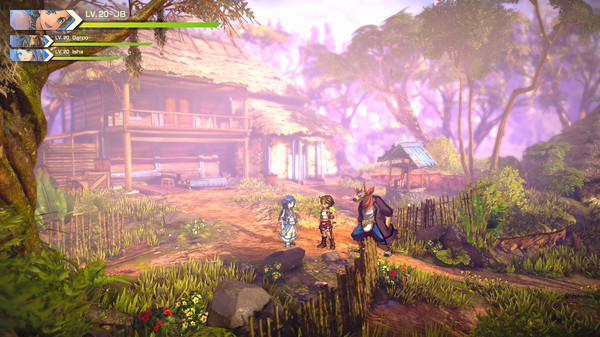  On the boundary of 'decent' and 'good' lies this peculiar spinoff of a game that has not been released yet. A prelude of sorts that sets up just a few characters that will be in Eiyuden Chronicle: Hundred Heroes, Rising opts for some simple side-scrolling ARPG fun over the Suikoden-style gameplay of the main game. This makes ECR feel a little like an early-era XBox Live Arcade game in terms of its limited ambition, but that doesn't mean it's without merits. Honestly, with better combat and exploration this could've been a pretty darn good game, but the general gameplay loop still manages to be pretty addictive, with you going on a run, then coming back to town and getting stamps on your stamp card and building up the town. Also it's a little gay, as a treat. 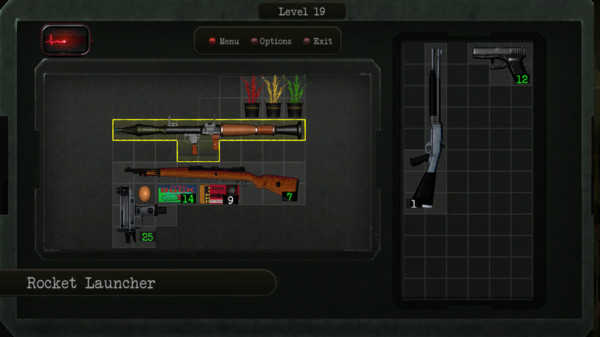   Most people who played the Resident Evil trilogy on the PlayStation grew to tolerate the game's weird form of inventory tetris, which limited what you could carry to what you could fit within a limited grid. Other sick freaks like myself, really loved the puzzly aspect of fitting everything together. Enter Save Room, a puzzle game specifically designed as tribute to the Resident Evil inventory menus, in which you are given a series of different inventory grids and weapon/item loadouts, and have to figure out how to fit everything in. This means more than just moving and manipulating the pieces, but also doing the same actions you would do in Resident Evil to scale down, such as reloading weapons with ammo, and combining herbs together to make healing potions. It's a very short game but it's also very cheap at just $3, which is certainly worth the asking price for an hour or two of jamming weapons and plants into your.... pocket??? Backpack????  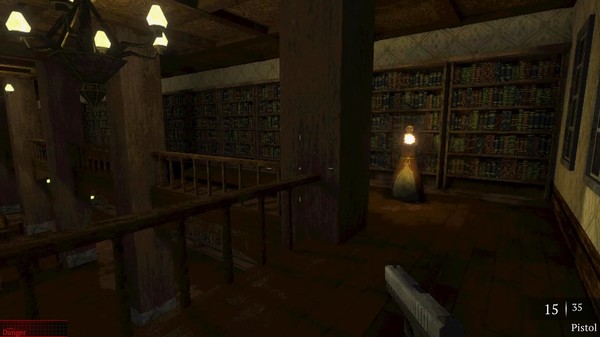  If Save Room didn't quench your thirst for Resident Evil tributes, Nightmare of Decay is an easy five bucks for a 3-4 hour first person RE1 experience that is authentic to the game design of the classics. It's got the same maze-style of mansion, the same kinds of puzzles and locked doors with theming, and of course, requires careful conservation of ammo, although with the first person perspective, it's certainly a lot easier to aim. It's no replacement for the originals, but it's a fun way to spend a night. Lastly, some non-2022 games that I don't have much to say about, but I did enjoy them: Cyber Shadow, No Straight Roads, Ghost of a Tale, The Signifier, Battle Circuit (yes the 1996 arcade game), Some Distant Memory, Song of Farca, MindSeize, Toree 3D, The World Next Door, SuperEpic (not related to UnEpic, thank goodness), Panzer Paladin, Mummy Sandbox, Serial Cleaner, Radical Rabbit Stew, Room to Grow, Prodigal, Wytchwood, Bad End Theater, Night Reverie, Lucifer Within Us, Blacksad: Under the Skin, Infinite Adventures, Guacamelee 2, Gamedec, Okinawa Rush, Castle on the Coast, House Flipper, Trails in the Sky 3rd, New Pokemon Snap, Popo's Tower, Maiden & Spell, Pocket Watch Alright, now onto the ranked entries! I had to break this apart into three posts so you're (Hydraulic Press guy's voice) going to have to deal with it.   This year's been interesting for spinoff games. Legends: Arceus tried to take a completely different approach to the Pokemon game structure, and Treasures throws out Dragon Quest's turn-based combat and globe-spanning adventuring for support-based archery and treasure excavation. And it works, for the most part! Setting out to whatever island you want, playing hot-or-cold to find treasure chests, checking off a few quests, and then heading back home to see what you've unearthed, it's a solid gameplay loop. It's fun to see bejeweled statues of classic Dragon Quest heroes and sidekicks from prior games, as well as esoteric items like a DQ eraser set, or a series of collectible card game cards. There's a lot of issues I have with the game, such as its limited roster of recruitable monsters, its combat being ultimately pretty mediocre, fast travel limited to a rare item, and worlds that don't have enough content to them. These are things that I hope can be addressed in the sequel that is teased after the credits. There's potential here for yet another DQ spinoff series to flourish, as Builders and Heroes have.  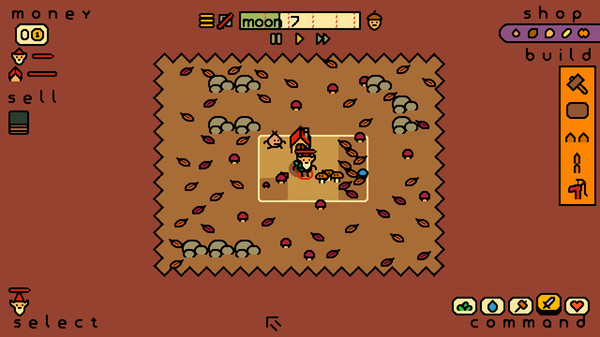  One of a few Sokpop titles to crack my top 50 this year, Guardener is their take on base defense, and it involves planting and harvesting your own defenses. As you buy and plant seeds, they will sprout into helpful little workers that assist you on your farm, or help defend it against waves of enemies that come several times a day. It's a simple formula that is enjoyable and like all Sokpop games, it has a cute aesthetic, a cheap price point and will only take you an afternoon to finish.  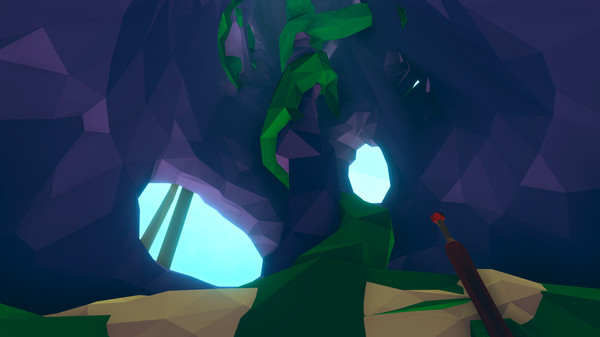  A first-person puzzler that may have somewhat lo-fi and simplistic visuals, but not to worry; the puzzles are the star here. There's all sorts of inventive puzzle types in the game, from mazes that involve rotating rooms and eventually flipping the whole thing upsidedown, to sliding blocks that form a bridge for you later, to a bizarre shape-based language that you'll need to take notes on that serve as coordinates and passwords. It's not the most exciting game on my list, but it's no less a solid puzzle experience in a year that was relatively light on them. And 100%ing it will require all of your brain cells to work in harmony.   There is no more iconic "podcast game" than a music-less game about spraying down mud-covered vehicles and buildings for hours... and also unraveling and stopping a plot to destroy the world? Yes, you might be surprised to here there's more plot than you would expect for a game that is just blasting a hose at a ferris wheel, but there's a lot of lore dumping going on in the intro to every level as well as the little snippets of dialog you get from the clients you work for. It really does get that high of stakes. And if, somehow, you haven't had enough after saving the Earth, the developer has included several extra levels for the community such as an entire miniature golf course. I would put the game higher if the game was just a little more forgiving on hitting that 100% sometimes. There are times where even with the 'spot finder' button, no remaining dirt will actually be highlighted because you've gotten rid of so much of it. So you just spray at what looks like a completely clean part, until it just suddenly turns to 100%. To be clear, this is more of an issue with smaller objects than large walls. But it's still frustrating! Just round up a little more, please.    A cozy game about a woman who intentionally crashes her ship to avoid her responsibilities, who then helps out a bunch of other people on the planet with their anxieties, while harvesting a bunch of material in order to find the ship parts needed to fix her ship and get back home. Sort of a Shorthike..like? But for harvesting? Where you have a raygun that blasts rocks and trees into a couple of different types of crafting items (it's kept very simple) that can upgrade your movement speed, blaster strength and stamina, and allow you to get to new areas -- not in a Metroidvania way, just a pure power way. You also get upgrades from the local shop, and can convert ingredients into currency if you have a surplus. It's got a relaxing vibe to it, and it's also only a few hours long so it's not a major grindfest. Yeah, the back half of my list has got a lot of "pleasant afternoon killers" in it. Nothing wrong with that, right? 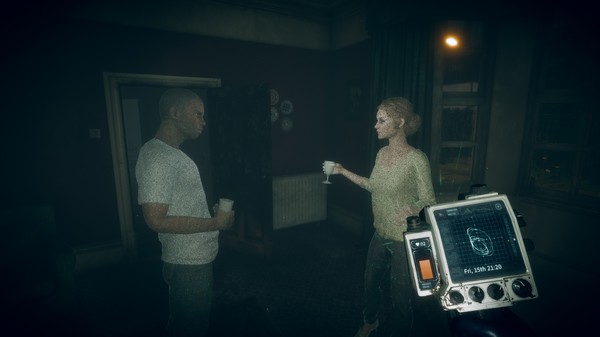   A smart and fascinating narrative game that is unfortunately kneecaped in one important area. Eternal Threads is a time traveling bit of voyeurism where you have to fix a screwup in history by altering decisions that people make in order to ensure their survival. What starts as an apartment in flames with everyone dead, can change to... well, still an apartment in flames, but maybe everyone got out of there instead! What makes ET interesting is just how flexible it is with its timeline. This is a game where a lot of choices DO matter, as they impact what characters will be doing later on, who they might run into, what later decisions they might make. While the characters aren't all endearing, they're all fully realized and it is generally worth seeing their whole story, and yes, you can save all of them AND give them an ideal ending. What holds the game back is, sadly, the dialog, which is a major component of the game. See, similar to Tacoma or The Invisible Hours, you watch a lot of scenes play out in real-time that you can walk around in, like immersive theater. And so the performances of the actors is pretty critical. And, unfortunately, a lot of the writing just fails to feel organic. It has the stiff, mechanical feeling of a first draft, with characters attempting to crack humor that isn't actually funny, with the respondant offering a small bit of sarcasm in response. The acting sometimes attempts to overlay but otherwise sounds like people speaking their lines individually in separate recording sessions. I think it's worth playing, but "games that are good that could've been great" is a bit of a theme with a good portion of my top 50, and this is certainly one of them. 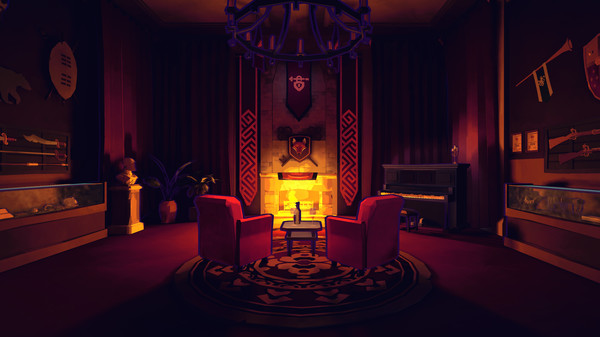 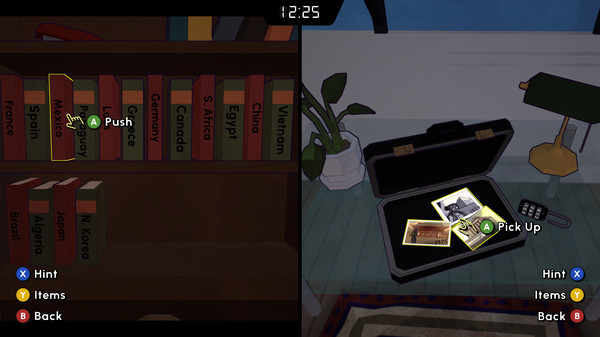  It is finally time for the escape room genre to have its time in the sun, although Academy still has a bit of learning to do before its next semester. EA puts you in an absurdly dangerous school where every teacher seems to be hell bent on killing their students with various hazardous escape rooms, of which you (and/or friends) will have the customary time limit to go through the room and solve its many puzzles before poison gas or lethal levels of heat or rising floodwaters consume you. As a AA experience, Escape Academy gets a nice little budget to have some very polished looking rooms and a similarly pleasant visual novel aesthetic for the story cutscenes, each of which lasts about 5 seconds. And really, I found that kind of disappointing. Because the air of everpresent lethality could make for a very entertaining Danganronpa-esque romp with a lot of quirky characters and skits... but every cutscene in the game ends almost as soon as it starts, and the main character (you) has no dialog. Though for those who just want a pure escape room experience, you do mostly get that here. Compared to last year's Escape Simulator, Escape Academy's rooms are a bit on the easier side, and definitely made to be a bit more accessible, with only necessary objejcts interactable. But, again, that can definitely be to the benefit of some people. If you prefer not to juggle through a bunch of useless objects, then this game will satisfy you. And the themes of the rooms are definitely fun. Although Escape Simulator's very flexible creation toolkit is a major feature Academy lacks, given Simulator's huge community repository of user-made rooms with all sorts of bells & whistles. It's the kind of game that could definitely rise to the next level with a sequel, and I'll look forward to seeing if that happens. It gives you the essential escape room experience with good polish and fun themes. As a Gamepass title, it's definitely worth playing before it eventually leaves the service.  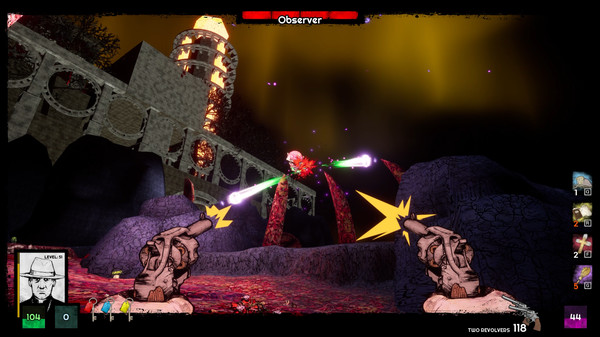  Although not nearly on the level of other retro shooters this year, Forgive Me Father still has a lot to offer. It's got a cool EC Comics style to it, with enemies whose wardrobes will change from level to level, even the grunts. Your adventure takes you all over the map, from city rooftops to industrial factories to cosmic labyrinths. The game suffers a little from a couple of things that may have been the result of going through the Early Access process. There are a bit too many levels in the game, and a couple of them have sections that are way too tough for the lack of a proper quicksave system. Oh, the game claims it has quicksave, but, it don't. It has checkpoints that you can save at, and that's that. (Maybe a future update will rectify this?) If I had to take Prodeus' revive system or Forgive Me Father's sparser checkpoints, I'd take Prodeus every time. But the guns, while mixed, have some decent punch to them and really fun upgrades that allow you to either make them traditionally stronger weapons or stranger fleshy creepy weapons that can make them explosive or energy based. And when you're in the groove, it's quite fun. It's just the most inconsistent shooter on my list.    Another afternoon-killer that is surprisingly decent, System Purge is a 2D avoid-em-up platformer where you play a witch girl whose mentor has gotten kidnapped after the two have fallen into an abandoned facility full of deadly traps. This may look like a 'rage' game by the fact that traps are seemingly everywhere in every room you enter, but I found that System Purge was actually very fair in its design. For example, the floor traps that swipe up and snap to crush you give you more than ample time from the initial visual tell to jump out of the way. Any laser that blasts in your direction is only lethal for a couple of frames. Ceiling crushers light up the floor before they're about to slam down. There's even an underwater portion where the traps take longer to activate, to account for your slower movement. At no point will a death be the game's fault. There are seven sectors to hurry through, most with their own new gimmick added on to the existing traps. One stage is all about darkness and light-up floors; another is about lasers that home in on you before firing, while another brings in enemies who chase you as you still have to dodge other extant hazards. While I was disappointed that the additions ended at the sixth sector, there's more than enough variety on display to last a 2 hour game. With a regular price of $5, System Purge is a pretty easy sell. At sales time it's a no brainer, if you like navigating perilous levels, but don't want Kaizo difficulty. 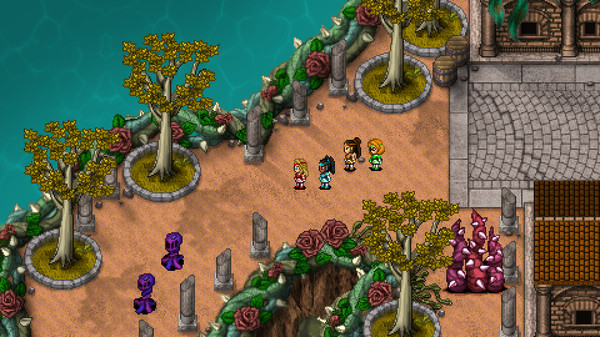 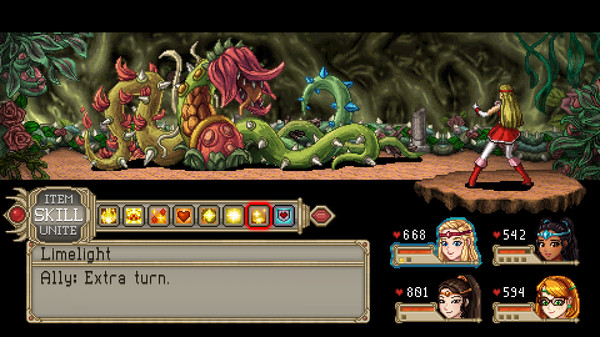  Zeboyd is one of the most consistent indie JRPG developers. Their games aren't at the peak of the genre (although I think Cosmic Star Heroine is quite good), but you're generally going to have a fun time playing them and they're not super long and often quite silly. And This Way Madness Lies definitely lines up with that. Oh I buried the lede I guess. It's a Shakespeare magical girl RPG. That's probably important to mention. You play a group of high schoolers putting on Shakespearean plays that use their magical powers to travel into the worlds of the plays to stop an unknown threat from corrupting them, making up the primary chapters of the game. These threats occasionally even enter the real world during slice-of-life skits. Which gives the game the feeling of compressing an entire 26 episode season of a magical girl anime into a single JRPG. Carrying the combat over from Cosmic Star Heroine, your fighters don't have mana/MP, but instead skills that are consumed and then must be recharged via spending a turn to rest. There are also Chrono Trigger-style Unite skills that either do significant damage or provide a buff. Some of the girls specialize in offense, from physical attackers to AOE magic casters, to buff and ailment support users. It's a little dorky but earnest and enjoyable in what it sets out to do. One highlight is a character that seems to only ever want to speak in sports metaphors and terminology. One thing that did bother me is that the game forces party configurations on you, a lot, and these configurations don't always synergize well, leading to some battles taking quite a lot longer than they should. I also found the music to be, honestly, kind of annoying and earwormy in a bad way. Just didn't fit the vibe of a magical girl game like everything else, to me. 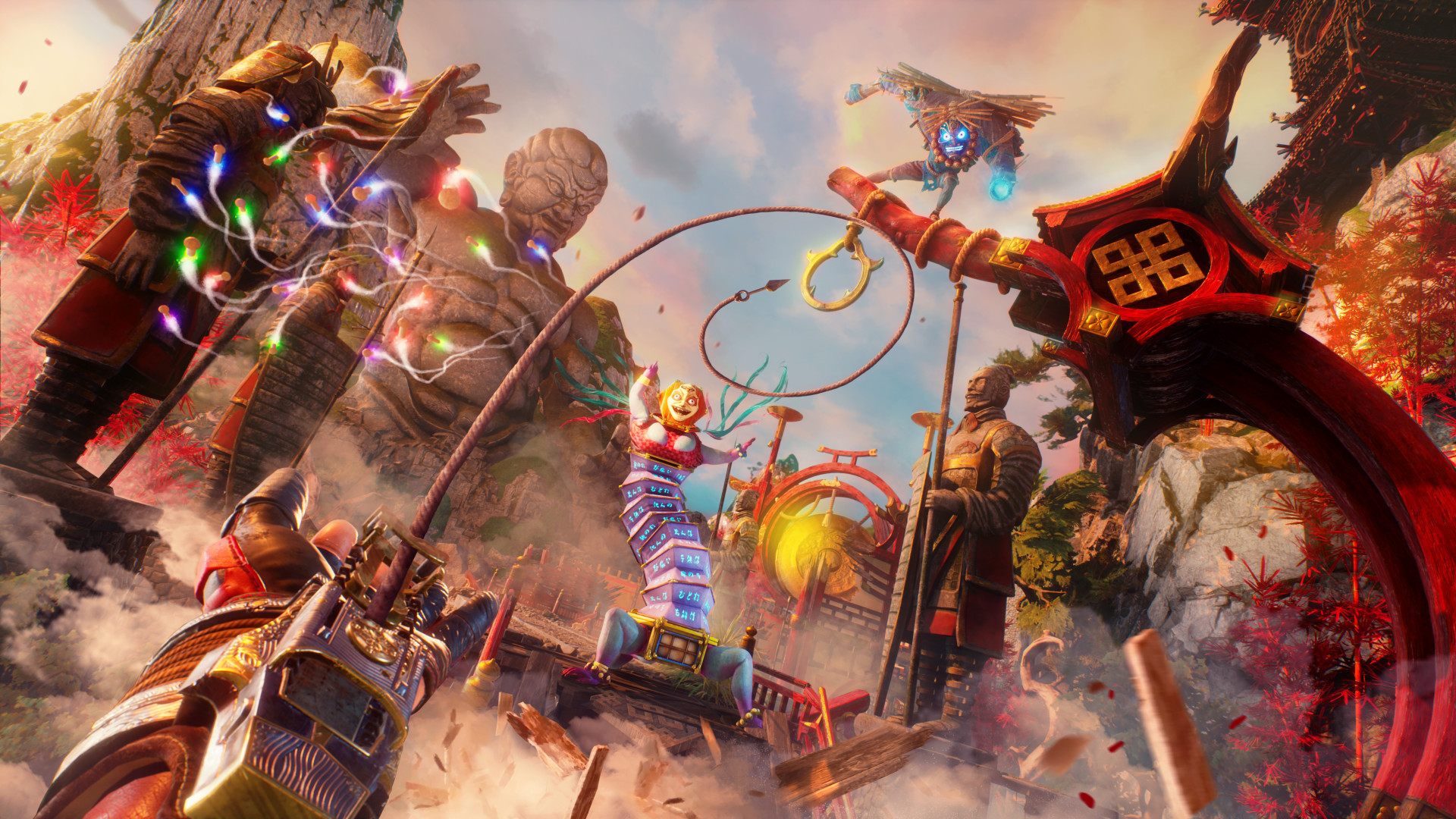  I honestly never thought I'd put any Shadow Warrior game on a top list, with how much I disliked the original Build game and then disliked the revival of the series even more. The repetitive level design, killbox arenas, and overall lack of iteration or enemy variety, along with my disappointment in Hard Reset made me think that Flying Wild Hog's output was never going to resonate with me. So why did a clearly low budget third entry with the same characteristic bad humor and jank place this high? Well, SW3 decided that rather than keeping on its usual path, they'd try to take after Doom Eternal. Which means that the campaign design is no longer flat corridors to flat box arenas, but ascending/descending platformer paths that lead to fun shooting arenas patterned more like traditional multiplayer deathmatch maps. Though, due to its low budget, such paths to arenas are just linear paths by another name, although they definitely utilize more setpieces and silly stunts than the first two games have. Look, is it as good as Doom Eternal? Absolutely not. Is it the first Shadow Warrior that I found to be actually fun? Yes. The game utilizes fun synergy in how dispatching enemies in one way feeds into your ability to dispatch a different enemy another way, and with you jumping and zipping around slicing and shooting, while activating traps that absolutely clobber goons, combat has a really nice flow to it. I played it via Playstation Plus Premium, but I know a lot of people don't roll with that... so, I don't know about buying it sight unseen, but if it ever shows up on Gamepass, it's definitely worth a play for a B-game experience. Well... a C-game experience that is still pretty fun.    While I found that this year had an incredible amount of solid titles, the one genre that felt the weakest was unfortunately my favorite genre, the Metroidvania. Now, I'm not going to yet again regale you with my irritating gatekeeping over what counts as a Metroidvania or not, but it is irritating that I never know whether a game with the Metroidvania tag on Steam actually is one, or just happens to be open world, or just happens to have some exploration. Itorah sort of falls into a rare third category, which is "game that technically qualifies as a Metroidvania without having an open world OR exploration". That doesn't mean it's a bad game, and actually, there's things about it that work quite well. It has a gorgeous Vanillaware-inspired aesthetic, with Mesoamerican theming and a solid mix of cut-out and traditional animation. You carry around a talking axe and so your attacks are slower (though a lot faster than you'd expect a greataxe to be swung around) but still decently crunchy. But it is not going to satisfy people who enjoy Metroidvanias for their non-linear nature, or sequence breaking, or finding cool upgrades in hidden areas. It is an extremely linear game that gives you ability/movement upgrades right before you absolutely need them, and sends you in very specific directions at all times. You can upgrade your HP, attack power and healing efficacy in town, but you won't be finding super missiles or health extensions in the wild. Just chests with different types of currency. Ultimately it's a game to buy on sale, and if you do, you'll have a decent time with it. There are better Metroidvanias on this list however that feel truer to the spirit of the genre. This is more just a cleverly disguised linear platformer. But the art and setting make it worth a playthrough, I think. 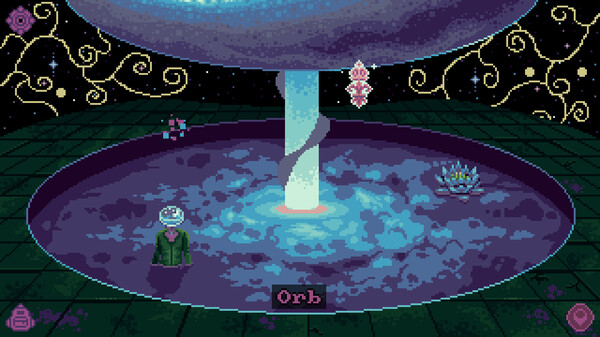   Being a part of the royal family on Earth is pretty boring, I imagine, compared to being one in a universe where FTL travel exists and warlords rule over space and your own house members may be supplying them and causing all sorts of space genocides. I mean, yeah that sounds kind of like America but we're not talking about that, we're talking royal family!! The people from the olde sideways brit world who usually you just associate with being irrelevant and racist (and recently, dying). Princess Love wants out, now that her mother has mysteriously abdicated her throne to her. But too bad! She's gotta deal with assassination attempts and intrigue when a routine stop at a lighthouse station becomes the site of a nerve gas attack. Blood Nova controls similarly to Norco, with a first-person point and click interface and a map in the lower right corner. It is not, however, a game with the size or scope of Norco, as its presentation is a lot lower budget. Certainly not ugly, however, as it has a cool "90s VGA" aesthetic and it is designed to be as frictionless as possible. Everything is handled with the single mouse click, including advancing cutscene text. Unlike Norco (which is far more focused on story and prose), inventory puzzling is the primary focus in Blood Nova, and you'll be combining things, using things on things, finding passcodes and using them, etc. The worldbuilding just throws you into the deep end and it's not always clear, not helped by characters that speak in overflowingly surreal metaphors, and sequences that feel dreamlike and unstuck in time and space. With a larger budget and a bit more attention to detail on the narration, I think this could've been a bigger hit, since I do think the constant quick cuts and lack of animation hurt the game as much as they help speed things along. Still, an intriguing sci-fi adventure and fun to play through. --------------- And that's where pt 1 of my list stops. I will give a bit of breathing room so as not to make this page take a year to scroll through, and come back with part 2 on the next page! The 7th Guest fucked around with this message at 22:18 on Dec 30, 2022 |
|
|
|
Hey y'all, here is pt 2 of my list! There will be... a third part.   Chalk this one up as a true hidden gem. ADACA combines the weaponry of Halo games with the campaign design and on-foot journey of a Half Life game. In addition to a three chapter campaign (the third of which should be ready in early 2023), the game has a separate but even larger side campaign in an open world, inspired by the STALKER series. The highlight of ADACA is not its lo-fi minimalist art style (which, as always, kind of tires me) or its story, but the triumphant return of gaming's greatest gift to mankind: the gravity gun from HL2. In ADACA, your gravity weapon is literally a part of you and can be used at any time, right from minute one. You can pick up most objects and fling them at enemies from afar and watch with joy as they careen off of rooftops with ragdoll physics, or you can steal a gun from an enemy and use it against them. It is every bit as fun as the original gravity gun, but with even less restrictions, and it usually is the best option in many one-on-one encounters. The rest of the weaponry is OK, but owing to the aesthetic and average sound design, can't hold a candle to picking up an oil barrel and blasting it into someone's face at 90 miles an hour like Randy Johnson destroyed that bird that one time. As such, it feels like maybe some better balance is in order, as well as just better sound design in general. The audio is inoffensive but unmemorable, and none of the cutscenes have voiced dialog. Some of this is due to the fact that the game was developed by a single person, but I still have to be fair in comparing it to the other games I enjoyed this year, as these factors do hold it back. The campaign is full of fun moments, from defending a scavenger town, to crossing towering bridges, to wielding what I will just call The Death Orb in a sure tribute to Half Life 2's final level. Though I did not play the open-world side mode, I have heard that its scale is quite impressive and has just as much love put into it as the main campaign. Maybe if I played through that mode I'd rank this even higher. All in all, though, an impressive debut. 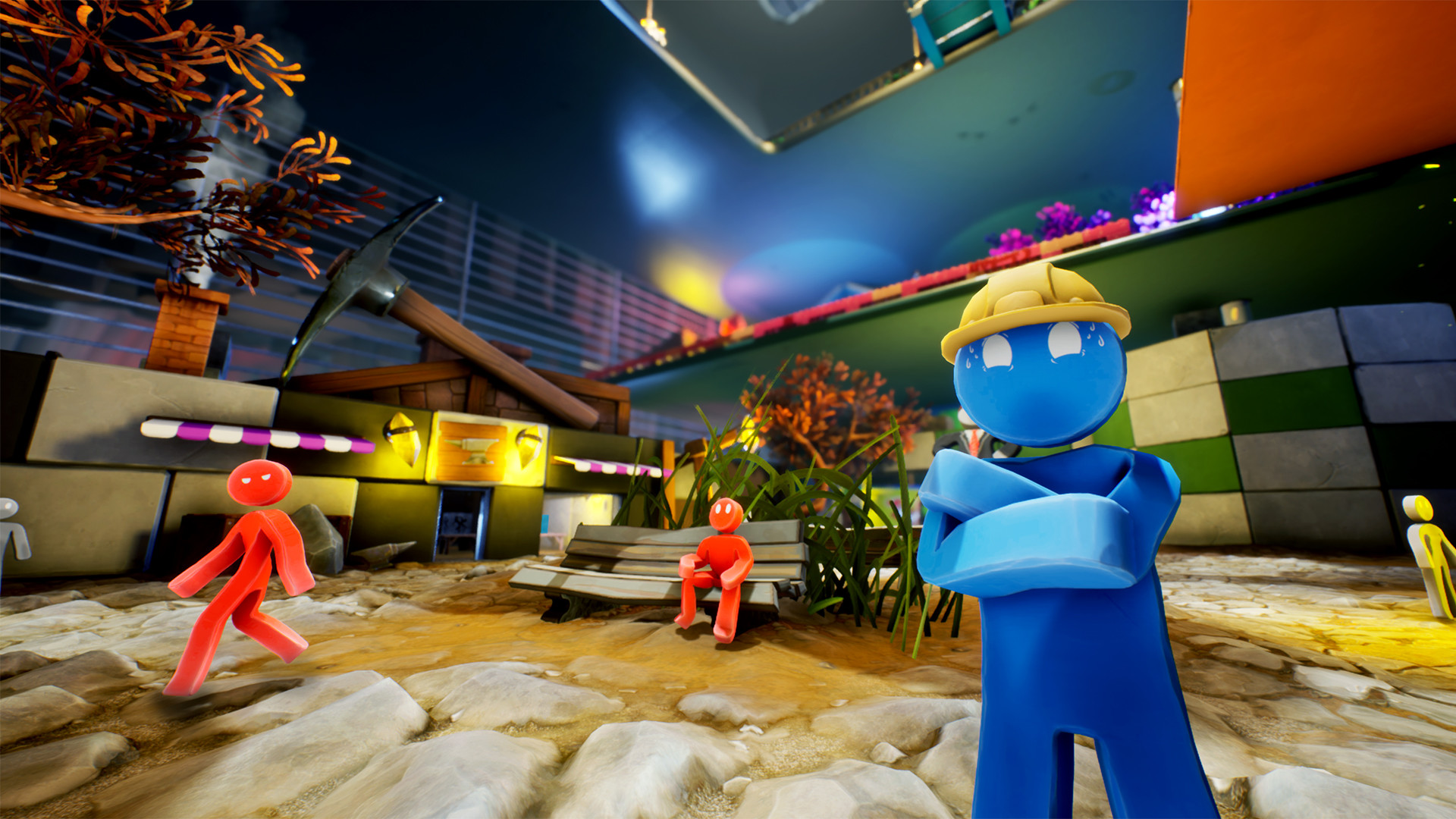  The first Supraland was a bit of a surprise, combining Metroidvania elements with puzzles with first person combat and platforming that combined in the cauldron quite nicely. After a DLC that to some felt like it took away from those very elements, Six Inches Under marks a return to the game design of the original, delivering on the same sense of rewarding exploration, hidden secrets, and silly storytelling. The reason it doesn't rank higher, however, is because much like Subnautica's followup, Six Inches Under does not iterate or evolve the formula enough to keep the novelty fresh. It is described by the developer as Supraland 1.5, and it really feels like it, as though the game takes place in an entirely new region, not much if anything has changed to the overall gameplay. The mediocre combat has been reduced slightly but is still there, and still has a couple of quite annoying mob encounters. The upgrades, with some exceptions, are mostly the same as the first game, and you run low on them before even reaching the last third of the campaign. It builds around a central hub town containing a relatively basic set of jabs at capitalism, and you'll be travelling through it time and again as you eventually reach the higher floors. It's an okay setup, but it is not an exciting execution. Still, if you like to find secrets, there are plenty to find in this game. You won't be able to get on top of as many things as you'd like, but you can explore most nooks and crannies and be rewarded. Six Inches Under is still GOOD, but due to several factors it's just not as special as the original. 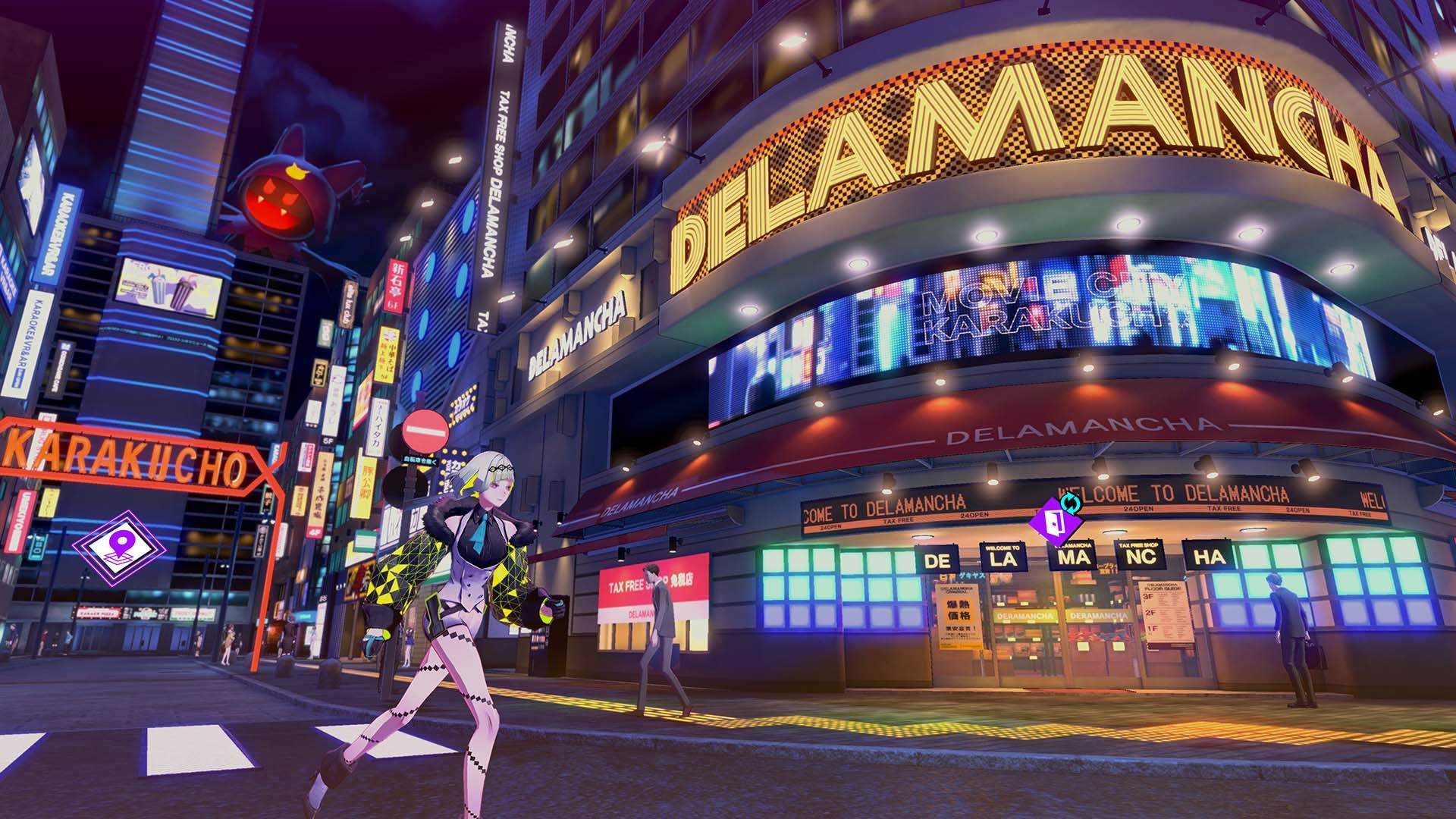  The second title on my list to not come from an indie developer comes from Atlus and the team behind Tokyo Mirage Sessions, a game with a very divisive reputation in the SMT fandom, but still brimming with creativity and style, if not substance. Soul Hackers 2 trades some of that creativity and style for a little more substance, but struggles against a small budget that works against it. You control Ringo, a human simulacra created by a sentient AI that has become so advanced it can predict the future, and sees a possible apocalypse that it has no choice but to intervene in. Ringo and her also newly-created sister save several individuals destined to die through the act of Soul Hacking, a process that dives deep into characters' memories and forms a co-dependent bond. Stripped of their usual demon-summoning powers, the crew relies on Ringo to augment their COMP devices and sets out to save the world. The cast is likeable, with Ringo in particular being a fun and up-for-anything protagonist that stands in stark contrast to many of the past, often blank player-avatar SMT and Persona protagonists. The rest of the crew includes a snarky shark-toothed mercenary, a cynical assassin, and a shonen-rear end secret society cop, and they play well off of each other, with many skits available at the local bar or through eating meals back at the base (which confer a passive bonus until the next return to base). SMT's past as a first-person dungeon crawler has had some distant Wizardry influence, but SH2, despite having the third-person trappings of other modern SMT and Persona games, is the first in the series whose gameplay loop calls Etrian Odyssey to mind (well, aside from Persona Q, obviously). You will dive into a dungeon and fight your way through until you reach a checkpoint, then head back to town to rest, eat, shop, and upgrade your gear with the money and ingredient drops you got from fights. The combat lacks the Press Turn system of the traditional SMT series, but has its own massive-damage factor called Sabbath that sends every demon in your stock at the enemy all at once, with the damage increased depending on how many times you hit weaknesses. To be clear, the combat in SH2 is not as good as SMTV, but it works fine and is decently up-tempo, especially after recent updates have included turbo and sprint options for the combat and dungeon exploration. What disappoints me more is the completely banal environments you explore, which amount to extremely plain boxes and 90 degree angles in the form of generic subway tunnels and office buildings. It's a major step down from the kinds of environments seen in SMTV or even other SMT spinoff games. But still, I ended up being surprised at how much I liked this offshoot. It's not at the top of the pile, but it does not dishonor the Shin Megami Tensei name. It's got uptempo combat, an addictive gameplay loop, a fun cast, and some sweet tunes. If it ever pops up on Gamepass, it'll be a no brainer recommendation. 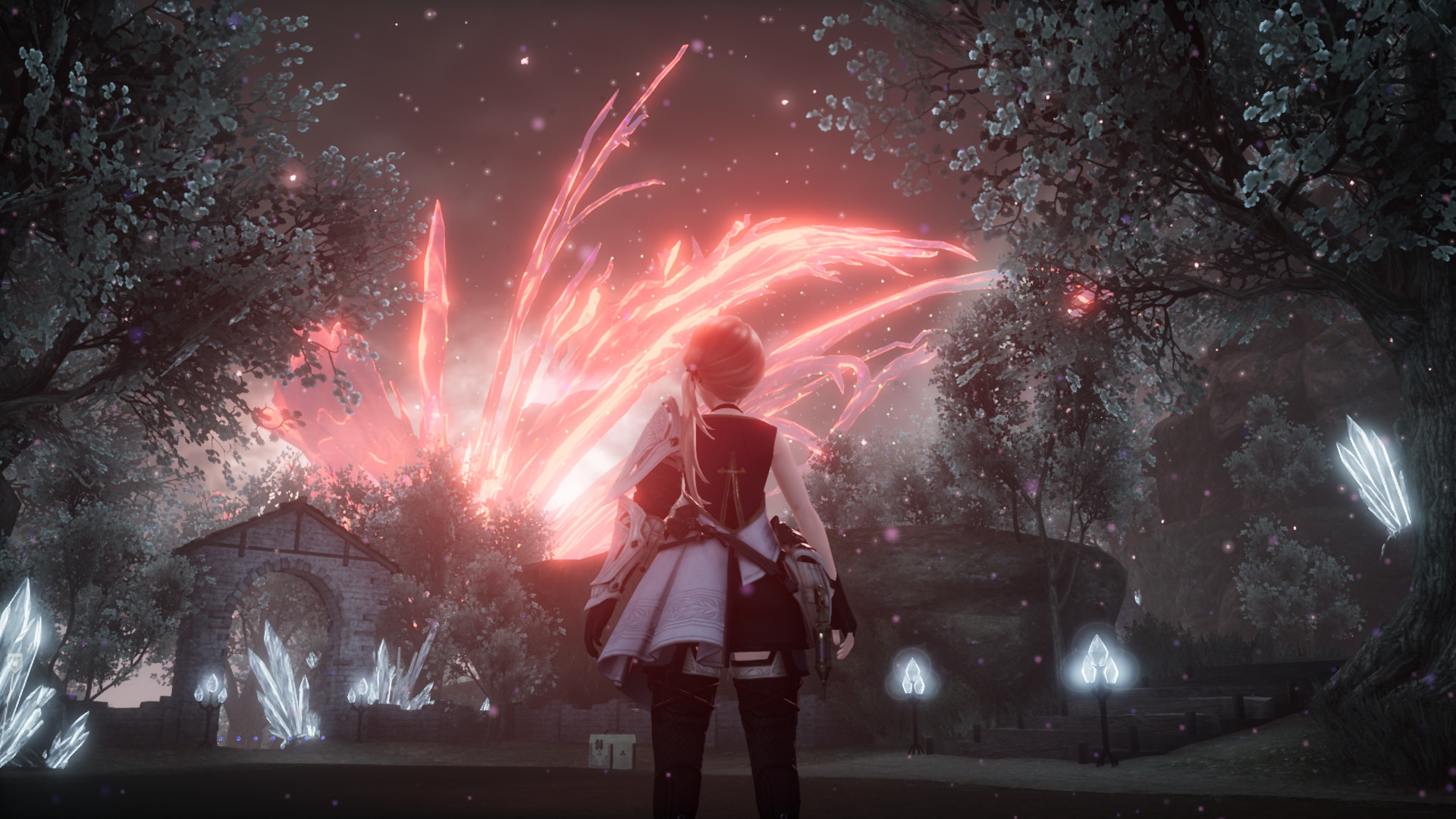  Chalk this one up as AA gaming's biggest surprise this year. While the farming gameplay is mostly a means to an end, and the combat fairly middling, the setting and story is possibly the wildest one of any RPG released this year. You think you're settling down for a cozy slice of life sim about farming in a fantasy setting where a mysterious natural phenomenon called Quietus makes going outside dangerous between the seasons. And then a time traveler appears from the future. And then the entire nature of your world is flipped upside down. And that's just the start of the second act. In a story that takes you on a journey through plot beats reminisicent of Chrono Trigger, Xenoblade Chronicles X, and even Nier Automata, your farm still persists. It's like that Undertale quote, "despite everything, there's still farming." Managing your farm and selling crops is one of only two ways to make money in the game (the other being rewards from sidequest completions), so you have to keep it running and upgrade it no matter what the stakes of the plot are. And so you get this interesting mix of sci-fi drama and relaxing slice of life vibes that manage to avoid stomping on each other, somehow. I don't know how, but it works! The game even has a pseudo S-Link thing where every character has their own personal story arc you experience by hanging out with them, which also confers passive permanent bonuses to the party. What really disappoints me is that the gameplay itself is just average. Combat lacks dodge rolling or damage feedback, the fairies on the farm are annoying (I hope I never hear "hello little croppies" ever again), some stuff is just never explained (the loft seems to function as an achievement system but you can't actually interact/examine the statues to see what they represent) and the dungeons are fairly basic in their design. But all of that just means that Harvestella will be remembered as a cult classic rather than an all-time classic. And that's okay with me. At the end of the day it'll be the most memorable farming game I've ever played, easily. Way more interesting than any factory that manufactures runes.   Released all the way back in January, Strange Horticulture finds a nice space for itself in the blossoming 'deduction' genre by going in a very different direction from other recent investigative games. You're not solving a series of murders... you're selling plants to customers. Now, these aren't just your average everyday plants that can make people tell the truth, or pick locks, or determine if someone is poisoned. Some of them make you itchy. The deduction process in this game involves figuring out just what the hell any of your unlabeled plants are. This involves crossreferencing a book on botany, and using a weird device to detect magical energies within certain plants. You also go out on ventures to certain locations on a map based on additional deductions you make on notes and cards you receive. These plants then go to customers who have some, certainly interesting requests. You also have choices to make on which plants to give certain customers that can impact the fates of other characters as well as determine the ending you get. Definitely a cool little game, one I was super addicted to, to the point that I kept my broken Steam Deck for longer than I should have just so I could finish the game first, despite it constantly crashing. (The crashing had nothing to do with the game but my Deck's malfunctioning GPU.)  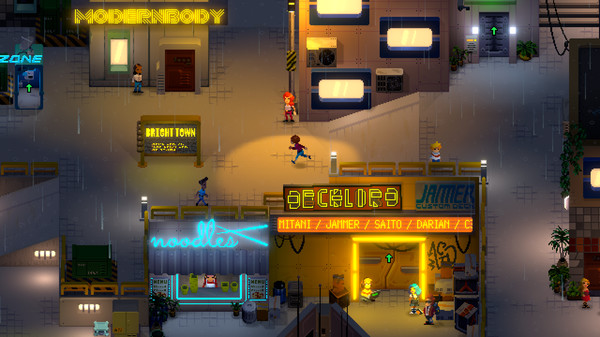  The year of the RPG continues! While I am not a huge fan of SRPGs (and thus, basically forfeiting a solid chunk of this year's bigger releases), there were more than enough traditional JRPGs to make up for it. And while it's a short experience, and certainly style over substance, Jack Move is pretty cool. A cyberpunk story about a woman trying to save her estranged father after he has been kidnapped by the largest megacorporation in the city for his research, Jack Move wastes no time with filler. It is a lean 7-8 hour game that takes you from dungeon to dungeon with no filler, with a simple but effective rock-paper-scissors elemental system and an interesting skill equipment component. This is all framed within cyberpunk terms, so your attacks are hacks, and your skills are installed to your cyberware's empty RAM slots. The visuals are vibrant and pop beautifully, with some really excellent pixel animation for attacks and spells. The titular Jack Move attacks all look really cool (even though I do wish there was a skip button for them after a while), and enemies are helpfully color coded to make weaknesses easy to read. NPCs in town have story arcs that run through the game like a Trails game, with dialog that updates after most plot beats. Ultimately a solid experience that doesn't waste your time and is a breezy cyberpunk adventure. 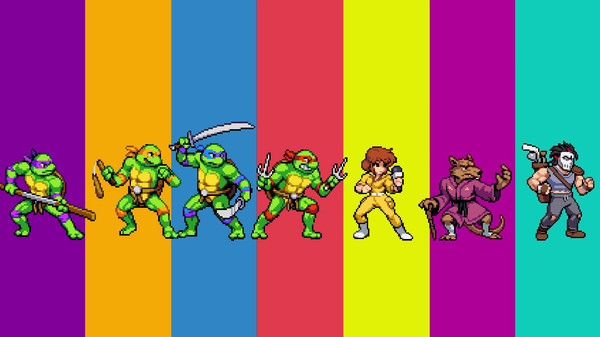   Anyone remember a certain Konami licensed arcade game? It was a 4 player cabinet... 'cowabunga' was a catchphrase... there were big bosses and moments of cartoony slapstick... that's right, I'm talking about The Simpsons Arcade Game!! Well, what if it had a sequel, but then the Teenage Mutant Ninja Turtles showed up and said it was their game instead? You'd have-- well, you'd probably have some sort of Family Guy cutaway I guess, but anyway, boy Shredder's Revenge is kind of a Simpsons game in disguise, huh? It's got an emphasis on sight gags, like enemies finishing their shift at the cashier before fighting you, or answering calls behind a desk. April's got a super attack that is basically one of the Simpsons tag-team attacks. There's a level that goes to a theme park... THERE'S A MINIGAME WHERE YOU RACE TO SEE WHO INFLATES THEIR BALLOON THE FASTEST??? HELLO??? IT'S THE SIMPSONS ARCADE GAME 2. Here's the real cut of beef on this: TMNT... is fine. It's placed where it's at because it's fine. I like the cute-style of the character art and animation, the slapstick animations are fun, the music hits somewhere between Turtles in Time and Hyperstone Heist (with occasional 80s rock and tunes by Ghostface Killa and Mega Ran??), you go to a decent variety of locations and there are lots of bosses. It's not the best brawler I've played though. Part of this comes down to a beef I've generally had with Turtle games, which is the overreliance on foot clan soldiers. It doesn't exactly do wonders for enemy variety to just have a bunch of foot soldiers that show up with different weapons to separate them. I was happy with a level at a museum that introduced dinosaur enemies, and a later level that brought in stone warriors to fight, but it was kind of little kind of late. I also felt that the belty levels could have offered a bit more at times in terms of traps and events. There are collectables, but they are so hard to miss that they may as well just give them to you automatically. So as a game, it's good not great. But it is elevated by excellent production values, and a decent roster of playables including April and Casey Jones (who is unlocked after the first playthrough). So if you sit down with friends you should have a really good time with it.    Although this was a relatively weak year for Metroidvanias, there were a couple of notable highlights, one of which was this sterling tribute to Castlevania 2 from Berzerk Studio, the developer previously known for Just Shapes and Beats. Infernax is basically "what if Simon's Quest US didn't hate you?" NPC dialog is actually helpful, the game's challenge has a solid difficulty curve, and they also add some player choices that can cause changes in the world. Without thinking much about it you can knock down a wooden pillar that causes a massive flood, if you're not paying attention to what characters say and just smash something because it can be smashed. The music is solid, the gameplay is fun and it nails the feel of those classic NES Castlevanias but in an open world. I don't have a ton to say about this one because I played it all the way back in February, but I can recommend a playthrough of it on Gamepass while it's still there. 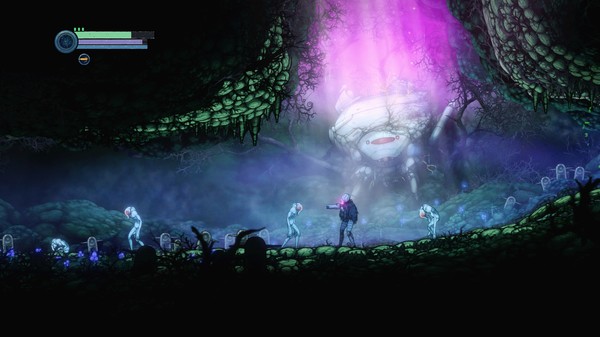 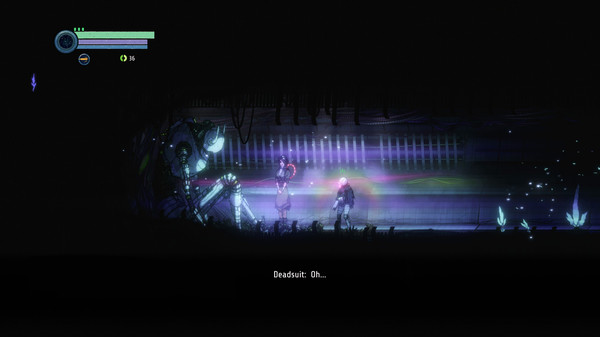  Okay, Ghost Song isn't perfect. It has a limited amount of bosses that often are just larger versions of regular enemies. The game should maybe NOT have drawn inspiration from Dark Souls for its currency and corpse run mechanics. And the biomes could've had a bit more variety to them. But very few Metroidvanias actually nail the feeling of isolation that Ghost Song manages to achieve, even with the population of characters you encounter on your journey. As a Deadsuit, you're not exactly sure what you are: person, robot or ghost. But you come across a group of survivors up on the surface of the planet you wake up on, who are trying desperately to get back into space before all the giant bugs and mutated humans come for them. Actually, it's weird to play a game that owes so much to the Metroid series but also has a lot of spoken dialogue and various people whose lives you learn about every time you return to base camp. It's something that helps set Ghost Song apart from the usual games in this genre. The setting is also interesting, with tidbits of lore detailing the collapse of the planet left as breadcrumbs for you to piece the science and history together. There are even characters that you come across at random just from exploring this alien bug-riddled fungal planet. One time I ran into an orc lady talking about leaving their home on a quest as is tradition, and it was the only time I saw them in the entire game! It won't be lasting or remembered like the Hollow Knights of the world, but it carved out a nice space for itself this fall and I enjoyed my time with it. And it was nice to see someone finally finish a project they had worked on for over 8 years. 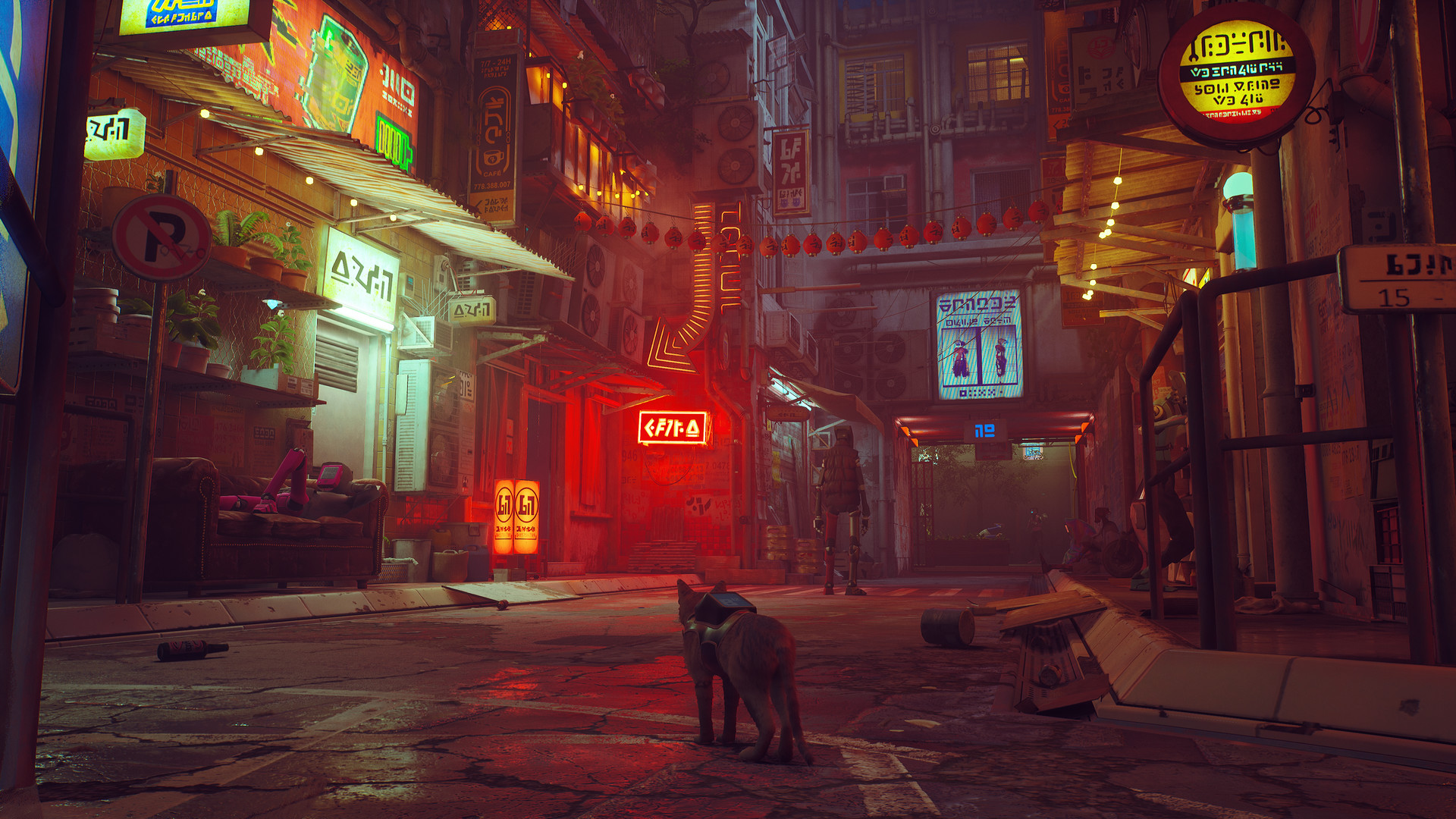  Yes, it's the cat game. Yeah, a lot of your appreciation of the game will depend on how much you like cats. No, I don't think the robots/NPCs take too much of the focus. I think that it all comes together well. Sure, the premise requires some suspension of disbelief on how much a cat can understand the English language, but a little bit of disbelief is required for most video game protagonists, okay? This is one of the most 'vibes' games of anything released this year. It has some incredible lighting and color choices, managing to make a post-apocalyptic run down society stuck in a rut feel warm and inviting. The music is always on point for the emotional beats of the story, and the animations of the cat, of course, are heart-warming. One thing that really impressed me about the art direction was its ability to make every location feel lived in and contextual, which is hard for most non-cinematic media to pull off. The gameplay is maybe the one weak link, as it is just okay with a lot of N64 Zelda or Assassin's Creedy climbing (albeit without the irritating open world or towers) that requires you be in the right position for a jump to be possible. But is never dull or boring and it manages to hold together enough for the aesthetics and the storytelling to carry the game the rest of the way. Plus, it's included with Playstation Plus' game catalog. It's like the only reason to subscribe to it, unless you also have a burning desire to play Shadow Warrior 3 because I listed it earlier. At least, until Sony decides to remove it randomly.   Sokpop kept shuffling along releasing a small game every month to their Patreon until they struck gold with Stacklands. You can see the difference just by browsing their catalog on Steam and seeing the staggering and shocking disparity in review count between the entire rest of their catalog and this one single game. It's far and away their biggest hit and for good reason. Stacklands takes the gameplay style of something like Cultist Simulator and transplants it into the village builder/survival genre. You will stack card types on top of each other to produce certain results, like a villager on a tree to chop/harvest it, or two villagers in a house to reproduce. This is in addition to simple crafting recipes that involve pairing a group of different cards together, with Ideas being unlocked over time to guide you. The game also drives forward with lots of little objectives that reward you with pack unlocks, bought by selling certain cards for money. Buying new packs unlock new types of cards, from harvestable resources to enemies that threaten your townspeople. It's a formula that works really well, and has been expanded upon with additional post-release support, adding new locations and features like automation. This is the year of awesome cheap games, and at $5, Stacklands sits near the top of that category.    DrinkBox, formerly (and likely will always be) known for the Guacamelee series, and aggressively putting old memes in their games, decided to try something different: an ARPG with a completely unique metamorphasis-based progression system, and significantly fewer memes. Probably one of the most addictive gameplay loops of any game this year, Nobody Saves the World has an enthralling unlock system where you rise in grade from completing specific objectives for each of the different classes you can transform into (from an archer to a rat to a ghost and many more), which unlocks new classes as well as allowing you to mix-and-match abilities from different classes to make the specific build you want (which, of course, also feeds into additional objectives). It's a game with great discovery and experimentation, hampered only by relying on proc-gen dungeon designs that all look exactly the same. Luckily, the dungeons are only part of the game and you do plenty in the overworld as well. But had Drinkbox put more time into the dungeons, then this could've been a Hades-level success. As it stands, it's still a pretty good game about becoming a dragon that can warp around and raise the dead, and a good way to spend a couple of days cooped up during the winter.    Here's one I didn't even know existed a month ago. I've talked before about Demon Turf in the Steam thread, a 3D platformer with hand-drawn sprite art that is very movement ability-focused, but Neon Splash takes the series in a more Toree/Lunistice route, opting for smaller levels to be beaten quickly and testing your platforming skills, without the combat encounters that honestly felt like an annoying hindrance in the original. It's more of the gameplay that people liked, trimmed to its essentials. You still have the varied moveset of double jumping, gliding, turning into a wheel to go super-fast, long jumping, wall jumping, etc. And each level takes advantage of this moveset, with an additional unlockable set of harder remixes of each level that will require you to know and use every movement trick in the book to complete them. With a cheap price point, varied stages and fun movement, Neon Splash is a nice little appetizer to fit inbetween your big playthroughs.   Rhythm Heaven fans went from crawling in the desert under a brutal uncaring sun, to an oasis of musical Heaven-likes in just the span of a few months, with Melatonin releasing this month, and Bits n Bops being announced two weeks ago in a Wholesome Direct, with Rhythm Doctor likely to leave Early Access in 2023. Perhaps Rhythm Heaven IS a place on Earth! Melatonin is kind of like the 'lo-fi beats to relax and study to' of Rhythm Heaven clones. Its cool, creamy pastels and mix of chill, EDM and chiphop is a cozy way to spend an afternoon, if not the most exciting. Make no mistake, Melatonin understands exactly what makes a fun Rhythm Heaven level, with themes ranging from ringing up a credit card for shopping items, to swinging at baseballs that travel through portals, to working a musical crane catcher machine, all of the same kinds of notation and swerves are here, with helpful guides occasionally being obscured as you get used to the level, until you've earned enough stars from each level to unlock the night's Remix stage, which, much like Rhythm Heaven, brings back the previous set of stages and mashes them together with a new tune and challenges your reflexes and memory. But what makes the game relaxing is not just the music but the general vibes. The game is not very difficult even in the hard mode that unlocks for each stage after completing them normally. The themes of the stages are not too zany, just dreamlike and surreal. If you're looking for some of the madness of Rhythm Heaven's Wii entry (still its best, in my mind), you're not going to get big cartoony antics or marching flamingoes. This is a more laid back experience that is welcoming to casual players. That said, I think that the game's input window could be a little more generous for said casual players. On the Steam Deck, which is fairly friendly to the player latency-wise as far as displays go, I found that the game seemed to have more leeway for late inputs than early inputs. This makes eighth and sixteenth notes a bit annoying to input as the middle input has a decent chance of being called early. Yeah I know, skill issue, mad because bad etc. I long stopped caring about trying to perfect every music game when I finished Gitaroo Man back in the 2000s. If you love watching people play games like this but find them a little too fast-paced, Melatonin might be exactly your speed. Now bring on the normie music game revival!!   In 2020 I gave my GOTY not to a game made in that year but a game newly released to American audiences that year. That game was Moon Remix RPG and it was, despite its clunkiness, despite the tedium involved in its day-night cycle, one of the most unique games ever made. You could make a similar case for this next game. Bringing the 1994 cult classic to the HD-2D engine, Live-a-Live gives you a roster of characters to play as, each with their own setting and story, that seem unconnected at first until you see repeated elements start to stand out, and then everything comes together in one big finale where you assemble your favorite characters into a party and fight the ultimate evil. While I do wish there was more variety to the combat-- like, way more variety, holy poo poo the combat is repetitive and samey the entire time-- no game, not even the Saga Frontiers, do the anthology format as well as this. Every character's story is so completely different in tone and theme and, aside from a short description of the initial setting and time period, you really never know what you're gonna get next. One story is a Western that has base defense elements. Another is a sci-fi murder mystery. One is literally a hot-blooded shonen sentai. It's a wild ride through the JRPG ages and there's rarely a dull moment... with the longest dry spell maybe being the caveman arc, being one of the longest chapters and entirely dialog-less, but still cute and fun nonetheless. It's amazing that this game did all these things back in 1994, with the remake serving mostly as a major visual and aural glow-up. It may only be available on the Switch, but it's still worth going out of your way to play if you like JRPGs.    You may remember two years ago when a few posters led a pretty strong campaign to raise awareness about Anodyne 2. Mixing top-down Zelda gameplay with Dreamcast-style 3D platforming and exploration, Anodyne's heavy themes and strong style caught a lot of attention (if not a lot of votes....), so it is a bit unfortunate that the developer's next game would fall so completely under the radar, because it's another fascinating game. Sephonie follows scientists that explore an island that seems to have become sentient, as they catalog its various flora and fauna, and learn of an imminent disaster that they are unfortunately powerless to stop. It's a game with phenomenal prose, as each character has deeply introspective arcs that are very well narrated. The general theme of making and breaking connections hits harder knowing it was inspired by the COVID-19 pandemic. The gameplay is an unusual mix of parkour platforming and Tetrimino puzzling. Moving around the world is akin to playing a Tony Hawk game, if Tony Hawk could run on walls (IDK, maybe the later games could? I stopped playing after THPS4). You also gain additional abilities to get higher and further and find additional creatures and lore. As you catalog the different creatures on the island, you connect with them by placing tetriminos in differently shaped puzzle grids until you've filled the bar all the way. It's not difficult but it's a fun little diversion, and in addition to gaining an understanding of the local ecosystem, you'll also get a weird bit of dialog from each creature. On brand for the developers, Sephonie boasts a warm early PS2-era look and cozy musical vibes, and features secrets everywhere, including ones that involve intentionally clipping through walls and going out of bounds. These trinkets largely serve as story nuggets to flesh the characters out more, rather than tick off a collectathon checklist, so there's no pressure to find them but plenty of incentive to seek them out. The levels are massive with a lot of "how the heck do I get there?" and plenty of routes and movement discoveries. There's even a bonus collectable game that unlocks after finishing the campaign for another hour or so of platforming fun. But the story is the real star here (and, well, the style of movement in the game is honestly not going to be to everyone's tastes, it's quite different and will take some getting used to). Sephonie makes another successful entry in the Analgesic Productions catalog. It's unconventional, it's surreal, it's beautifully written, and if you can get a grasp on the controls, it can be a lot of fun too. 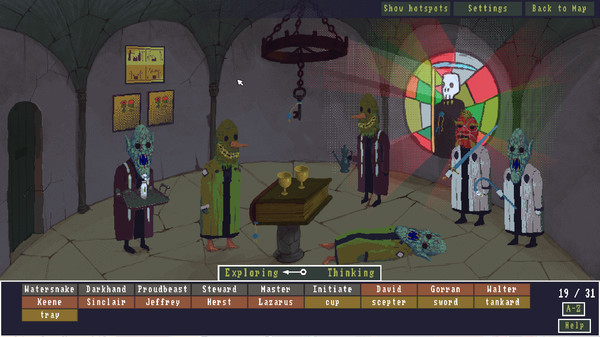   The Golden Idol makes you feel smart. Maybe less so if you type Curse instead of Case, but listen, it's easy to make that mistake. What's not easy is juggling all of the characters and story arcs that interweave over the years that make up CGI's twisting and sinister mysteries, but as you go back through previous chapters to put together the final epilogue, you'll see all of the subtle visual cues and foreshadowings that you missed and realize, drat this developer fuckin thought EVERYTHING through. It is a Pepe Silva board of connections and conspiracies and seeing it all laid out at the end is very satisfying. The glue that holds this precarious puzzle box together is a tag-team of delightfully strange art and friendly user interface. Evoking the European computer scene of the early 90s, Golden Idol's grotesque character designs are instantly memorable and fun to watch as they backstab each other and gawk at the supernatural. Placing the solution on your table like a children's activity sheet at a Denny's, you fill out what looks like the world's grimmest Mad Libs story column by column, identifying the suspects and victims, the timeline of events, and the various pecularities of each situation (such as a chapter depicting a society where merits and demerits are handed out based on a fascist set of 'virtuous' policies). At times the Golden Idol is even more in the hands of the player-detective than its obvious inspiration, the Return of the Obra Dinn. And while its presentation is a little simpler and its atmosphere not as strong, CGI still makes a case for being one of the top deduction games on the market. 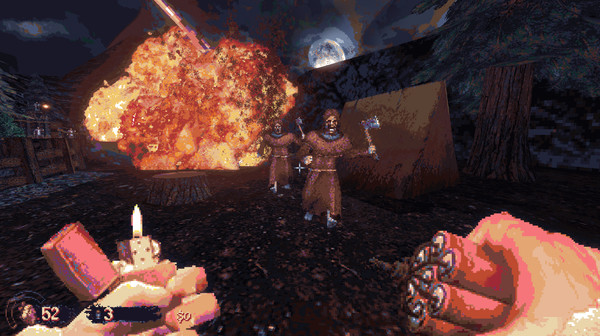   In the boomer shooter renaissance, we've had pitch perfect takes on Quake (DUSK), Hexen (Amid Evil), Doom (Project Warlock), but there's one classic that has been overlooked by the burgeoning indie scene... until now. That game was Blood, the debut Build title that would put Monolith Productions on the map (nowadays people might know them for the Shadow of Mordor series, or F.E.A.R., or the Condemned series). I won't explain Blood, but if you know it, and love it, and have felt left out in this age of retro revival, Cultic is what you've been waiting for. Much like Dusk, Jasozz Games does not attempt to just mimic Blood 1 to 1. It knows you want to destroy cultists, it knows you like explosives, but it's gonna do it its own way. Opting for an intentionally limited color palette and earthy tones, Cultic's aesthetic is oppressive and raw, with a campaign taking you through an abandoned mining town, cave systems, and a mental asylum with trenches dug all around it that the cult has bought the rights to in order to conduct operations underneath it. Combat in this game is pretty awesome. In addition to a kick button, you have sticks of dynamite that you can throw and then shoot at to cause massive explosions that absolutely shred enemies into kibble. You can also upgrade your weapons and make them stronger and higher in capacity, which requires you to find weapon parts found in secret areas. That's right, a retro shooter where finding the secret walls/areas actually rewards you! Well, actually, there's another that does that, you just haven't gotten to that part of the list yet.  Though the game is billed as "part 1", it's a full standalone game that ends the same way plenty of shooters have in the past, with a sequel hook. Otherwise, there's no reason to wait on this-- it's not an Early Access title, it's a completed project that will have a followup in late 2023. At only $10, and featuring 10 levels, you get a reasonable entry point to a very polished and well directed game that doesn't replicate what Blood did 1 to 1, but offers one person's alternate vision that is just as entertaining.   If you like choose your own adventures with a touch of the supernatural, but think Uchikoshi games are a little TOO much for you, then Beacon Pines is a gentler, but no less dangerous tale. Sort of a Stranger Things for the talking animal crowd, two friends and the new kid in town uncover a conspiracy within their small, quiet town that could threaten the world. Within the narrative framing of a book, you and the narrator will guide the characters through story sections by selecting words to fill in the blanks, which you receive over the course of the game for doing certain actions or eaching certain plot moments. These can result in silly circumstances or entirely new story branches, and most branches are required to finish the story and understand what's going on. Despite being for all-ages, it is all-ages in the Goosebumps sense, where bad ends imply some pretty dire outcomes for the characters, and the narrator is just as frustrated as you are with the way the story keeps ending up, but just keep at it. The visuals are lovely, and the characterization is fun in a nostalgic 90s 'kid adventure' way. The secrets of the town are fun to discover, and there are some truly good twists in the plot and though some things are maybe a little too crazy (a couple of branches make some pretty... permanent changes to characters), I think that the tone of the game manages to pull off those moments. The reputation of visual novels made in the West has taken some hits, partially from overfilling the Steam marketplace, also from usually relying on stale comedic gimmicks or not offering the kinds of stories that people are really looking for (or worse, are just otaku-baiting trash). So it's nice to see a game that actually manages to have a unique voice and then just goes a little wild.    Take an RPG, a point and click adventure, and a strategy game, and blend them all together with a stack of Guy Richie DVDs, and-- DON'T DRINK THAT, are you loving crazy?? It's a metaphor. Holy poo poo. Okay, this is Sunday Gold, that's what I was trying to say. gently caress. Sunday Gold combines the fun of a revenge heist with some absolutely bonkers story elements (fleshy cybernetic dog fighting plays a major role), amusingly bad British accents, and a gameplay hybrid that defines "greater than the sum of its parts". No one aspect of the gameplay shines, but they balance each other out and keep things interesting the whole way. Whether in or out of combat, every action consumes AP, and ending a turn outside of combat increases the awareness level of security in the building, which affects the percentage chance that an enemy encounter happens between rounds. This in theory could mean punishing wanting to explore and interact with everything like a true adventure gamer, but the reality is that combat is inevitable and you can just play it by ear. If something seems important you should go ahead and interact with it. Like any adventure game there are puzzles to solve, items to pick up (some of which are needed for progression, some of which is gear, some of which are healing/support items) and sardonic examinations of hotspots, although unfortunately the characters don't react all that differently when on their own, so that's a wasted opportunity there. The game has panache for days, with a mix of stylized 3D models and hand-painted backgrounds. The combat is a little repetitive but is interesting when the composure effect factors in (the lower a character's composure, the less time you have to give them a command before they panic). Plus I'm a sucker for battle systems that involve careful banking and usage of action points. The bosses had way too much health when I played, but this has apparently been patched and rebalanced. It's a bit of a messy game, but I applaud it for giving such a wild mix of ideas a try.    What a feast for me this year, the retro shooter fan! And there's more to come. But let's talk about Fashion Police Squad, a game with its tongue firmly in its cheek but with gameplay that backs up the humor. As a fashion cop your job is to stop all of the tourists and businesspeople running around in horrific duds by literally shooting style onto them with your weapons, from whipping people's pants up, to stitching people's poorly tailored suits with a sewing gun, and other clever ideas. Each enemy requires a specific type of weapon to cure their fashion illness, so you have to constantly be switching weapons and hopping around, keeping you on your toes and invested in the combat. Your whip also can be used to wrap around poles and launch you through the air, which allows for some additional platforming challenges to be integrated into the level design. The theming is great and the game is willing to mix things up constantly, from a car chase level to a skateboarding sequence. The movement and level design call Wolfenstein to mind but in proper 3D and with the ability to get up and around with jumping and whipping. At launch, I commented on how Fashion Police Squad was notable alone for being a fully finished project instead of yet another Early Access retro shooter, but even putting that snide remark to the side, I think that the combination of silly setting, fun weaponry, and interesting (enough) levels makes for a highly entertaining game in its own right. In a year that had several notable shooters, FPS stands out for its sheer creativity. 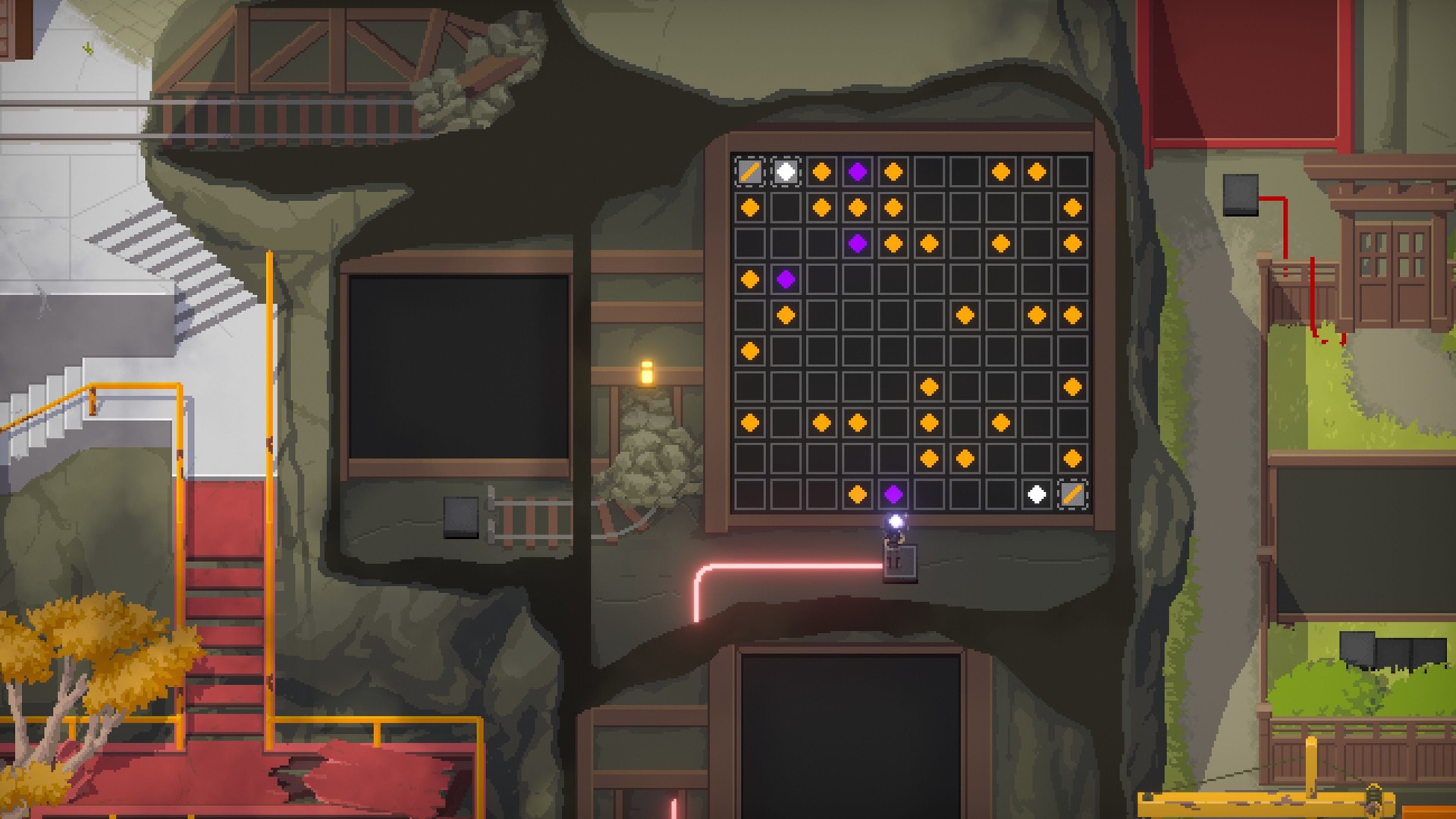  gently caress I love Taiji. Taiji is an open world puzzler similar to The Witness, but without any of the pretention, and purely about the puzzle solving. It utilizes a grid format for inputting solutions, each area often starting out off with some sort of environmental clue or a brand new symbol, and expects you to decipher its ruleset yourself, with no help or handholding. I greatly appreciate this trust in the player, because I was able to complete the entire game without a guide (someday, I'll be smart enough to do the post-game), and anything that isn't provided for you can be divined with a little deduction (and since the game is non-linear, you can go always elsewhere if you can't figure a puzzle out). The world design is extremely well thought out, and this even plays into the previously mentioned post-game, which asks you to study the environment even further to discover hidden puzzles that have been designed INTO the world itself. It owes to the well-designed pixel art that you completely overlook this all until told to look deeper, and then, BAM, it's staring you right in the face. Every year I find at least one stellar puzzle game to crack my top 20 and Taiji was an easy choice this year. It takes a concept and explores it to its fullest, and it lets the player make the discoveries themselves. I can't ask for much more. 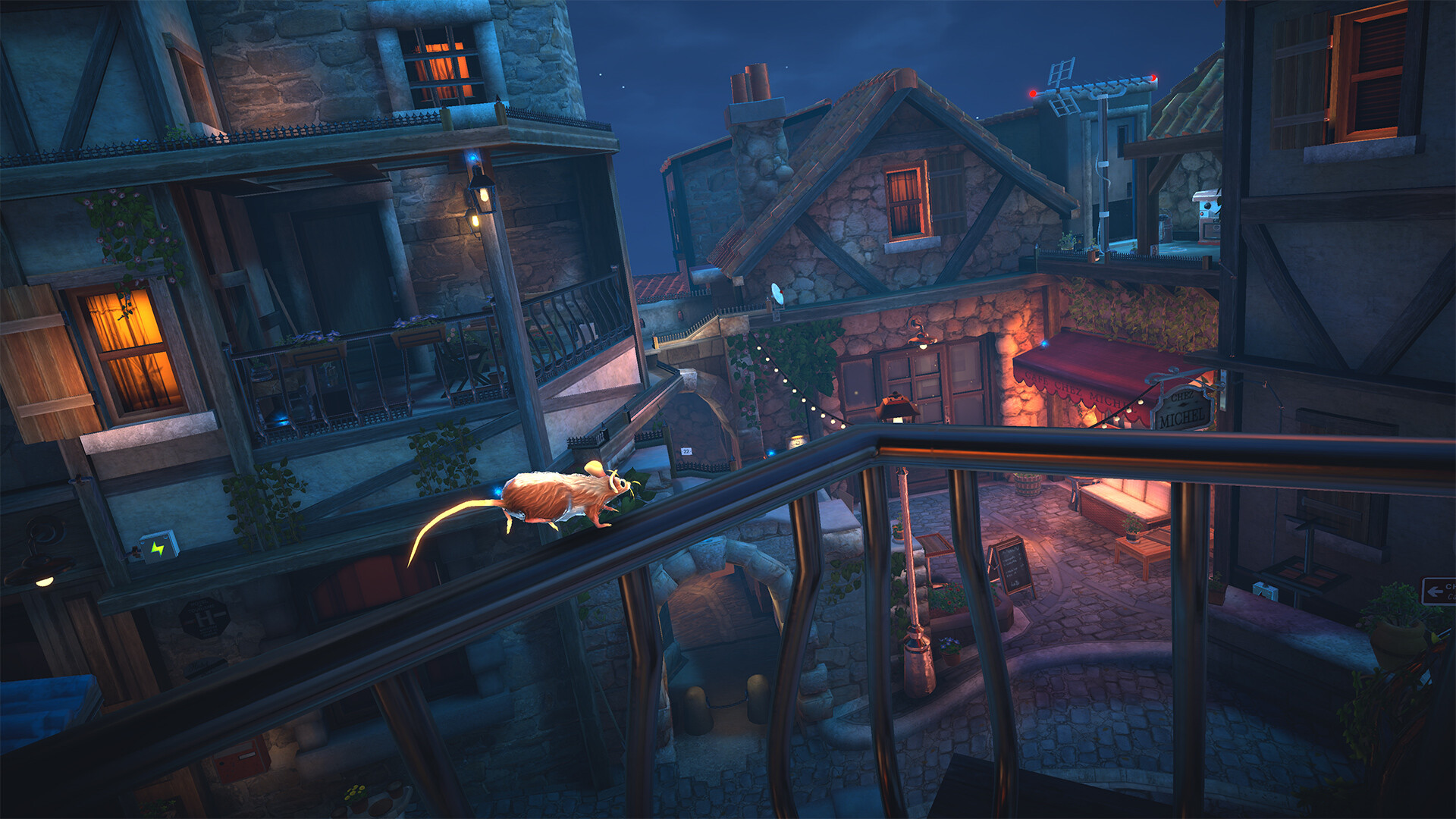  A charming all-ages game that could easily make a companion game to Stray, Spirit & the Mouse places you in CHARGE (heheheheeeeehhhh) of a mouse that has developed electrical powers after getting zapped by lightning and stealing the powers of an elemental guardian. He's then tasked with helping the people around the town in order to restore the guardian's power. The platforming is similar to Stray, with contextual jumping, but here it fits a lot better because you're a tiny mouse that is not jumping so much as climbing, and everything you climb is, well, looming right in front of you (for me, in Stray, it kind of annoyed me how some things just couldn't be jumped to, or that I had to be in a certain place for a jump to become possible). You also can travel through power lines and eventually get a teleport ability to warp through fences. This game is charming as hell, with a localization and character animations that have a Nintendo-level of polish to them. It's also fun to run around collecting the many lightbulbs scattered around, which unlock additional bonuses like fast travel. Nothing in the game is too challenging, which makes it suitable for kids to play. And it's also just 5-6 hours in length, so it won't trap you for too long. A perfect little family game. 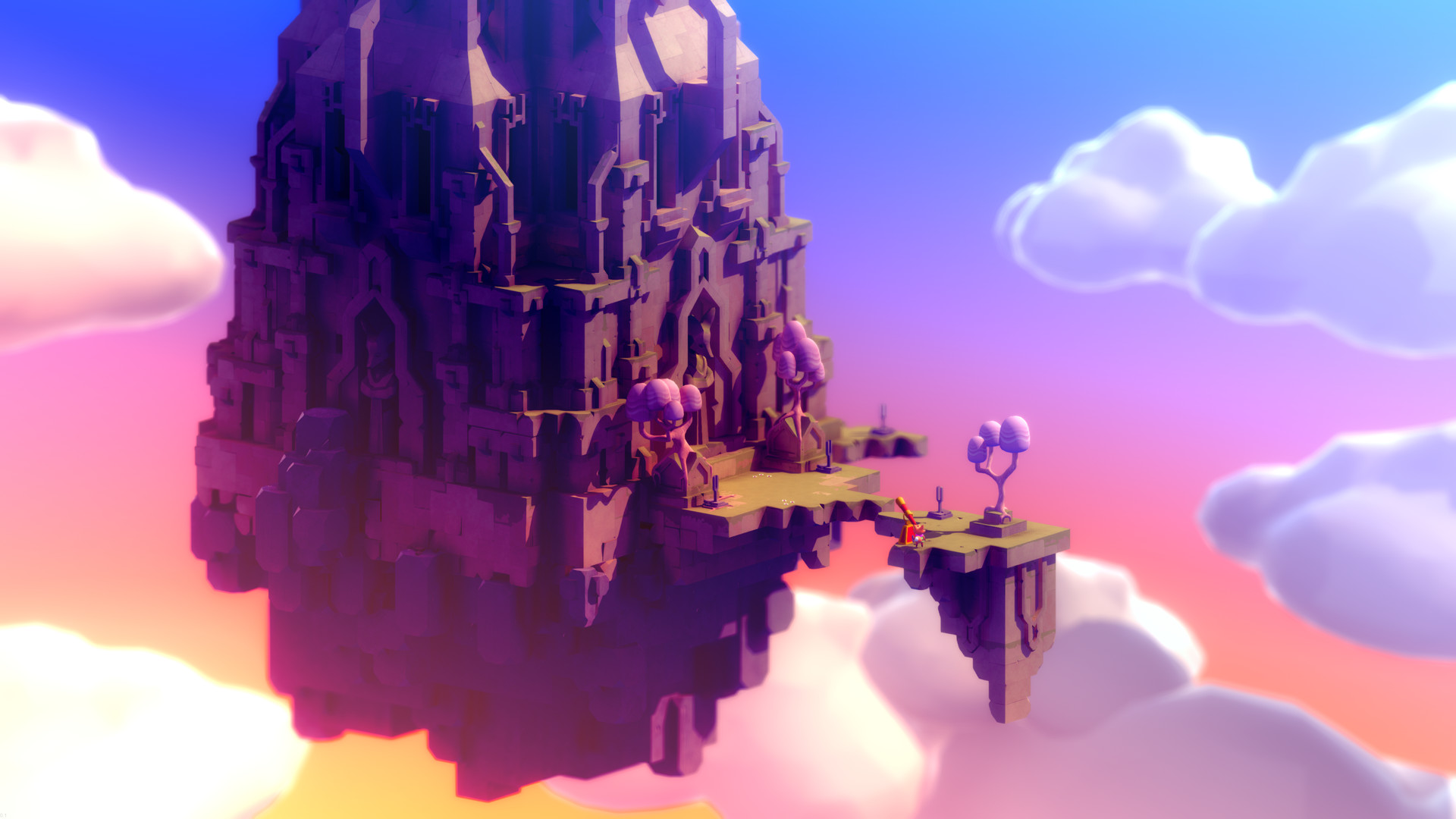  A lot has been said about Tunic throughout the year, from its wonderful aesthetic, to its fun micro and macro puzzles, to its bizarrely tough difficulty. If I'm being honest, just in terms of sheer fun, I actually do think that its direct competitor on the market (Death's Door) is better, which is why Tunic does not rank as high as that game did last year. But that doesn't make Tunic any less special (a word I'll use a lot for these top-of-the-list titles). Finding player manual pages throughout the world is probably the most unique and interesting mechanic of any game this year outside of Nobody Saves the World's class system. It's a brilliant way of conveying exactly what information the player needs at the time, and each new page is a fun discovery... it might teach you a mechanic you didn't know about, it might give you a map to a location, or it might completely alter your understanding of the game. The gameplay itself is, like Death's Door, an intersection of Zelda and Dark Souls, with enemies punishing you for massive damage, healing potions that refill at a checkpoint (along with respawning enemies), big boss setpieces, large maps with many routes and shortcuts to unlock, and Zelda style upgrades that allow you to reach new areas. Where the game shines is its puzzle design, which calls to mind the indie classic Fez, with all sorts of cryptic rooms and patterns to study. There's some genius stuff hidden in plain sight, like a puzzle involving a wind chime that requires you to turn the music down in order to leave just the environmental ambience, in order to get the hidden 'instructions'. While Death's Door was the more exciting and entertaining game, Tunic is the more insightful and thought provoking game. It's the kind of experience you can have with a friend or roommate as you solve all the mysteries of the world and go for that true ending. It's still an easy recommend for me. And that'll do it for part 2 of my list! Part 3 is the one that counts! I'll see you next time! The 7th Guest fucked around with this message at 05:20 on Dec 31, 2022 |
|
|
|
Part 1 - Part 2 Alrighty, before I go through my top ten I just wanted to list a couple of games that I played that I couldn't really give an honorable mention to, but I also didn't want to leave unregarded. These aren't DIShonorable mentions, just... mentions?? Mention #1: Vampire Survivors The reason that I didn't care for Vampire Survivors may come down to the style of game that it is. Though I do like idle games, you can't really idle so much in this, as you do need to keep moving around... but it's also too slow and passive to be a fun action game. It sits in this uncomfortable inbetween that makes me very sleepy, to have to sit through an entire 30 minute round (and even the 15 minute mode is a stretch). I'm glad people like it, but it's not for me. Mention #2: Indie visibility A fair number of games in my list have fewer than 1000 reviews on Steam. Some, like my 2021 list's Binky's Trash Service, are barely into the double digits. It's been bad for years, but I think at this point we are in full-on crisis. Publishers are not doing their jobs either, because I have seen games like Sunday Gold have dead silence, and that's TEAM 17. The Worms people. What, you too busy making and apologizing for NFTs to do a little promotion? And actually, okay gently caress it Mention #3: Indie publishers Hey. Dear Villagers? Team 17? Other indie publishers who are already not doing their job as it is? When I click on the link to a developer from a game's Steam page, I want to see what else that developer has made. What I don't want, is to be redirected to the loving publisher's catalog. I'm sorry, did you, do you think YOU made this game? No, you did not. You provided some press kits and localized it into 3 non-English languages, assuming you even paid people to do that. I want to know, if I liked a game, if the dev maybe did something else cool. When I click on the dev for Sunday Gold, I don't want to hear about Worms WMD. Those games have absolutely no commonalities!! Now, are a lot of indie devs first-timers? Yes. Many, many games on Steam are the debut (and sometimes final) entry of a fledgling studio or person in their garage. But that's not always the case. I have seen instances where a developer has released multiple games on Steam, but a couple of them redirect to the publisher's page rather than the dev's catalog. That's just so lovely. Why do you make that part of your contract or whatever? I assume it has to be. In exchange for the zero dollars you spend to get the game out there. I see ads for the loving Moon Pod but I don't see ads for Jack Move, which had fewer than 500 reviews on Steam. The publisher calls themselves HypeTrain Digital which has to be the most ironic publisher name I've ever heard. loving get your poo poo together, publishers. What are you all even doing?? Okay, let's get on with the remaining games:   Ron Gilbert's a divisive figure in modern gaming thanks to The Cave and Thimbleweed Park, but he's a beloved figure in the adventure game scene, and when Return to Monkey Island was announced, everyone was excited to see how Ron would address his last canon involvement, the infamous "Big Whoop" ending of Monkey Island 2: LeChuck's Revenge, as well as the games that followed his exodus. Return manages to weave every game together with some smart twists and a clever framing device. It's a story about obsession, and the destruction and harm that comes with that. What is the Secret of Monkey Island? Is that truly important? It introduces some new fun characters as well as bringing back most of your favorites. Without Earl Boen to play LeChuck, the role does to Jess Harnell, known mostly for playing Wakko in Animaniacs, and... he does just fine! On top of that, Dominic Armato brings his best performance yet as Guybrush, with some truly great deadpan line reads to go with his usual charming and chirpy energy. The puzzles are good, the backgrounds are gorgeous, and.. sure, the animation is puppety and odd, but it ends up being fine. The ending, unfortunately, falls into another patented Ron Gilbert pothole, and I found it disappointing in several ways, but it wasn't enough to ruin the game for me. This is easily the best adventure game this year, and a fantastic send-off for the series.   Mara's going through those terrible teens, where every incident feels like the world has ended and a piece of you has died. And to some extent, Mara's world is continuously being destroyed and rebuilt. Despite living in what she feels is a dead end town-- a New York island tourist trap akin to Ocean City, Wildwood or Cape May (ok there's a more obvious NY reference here but I grew up in New Jersey okay)-- everything is changing, and she is changing as well. But not in sync. The island residents are slowly leaving as condos and renovations happen for a crowd that will only ever show up for six weeks out of the year. Her childhood friend is distant and avoids her at school. She is old enough to get a job but still seen as a child by everyone around her. Her one solace, an online fanfiction forum, is slowly fading away. And as she is mocked by peers, as she desperately searches for validation, she is never sure if the connections she manages to make are real, fleeting, or a lie. And the truth, no matter what it is, only serves to worry her more. This is a coming of age story that is about as real as they get, written by a seasoned veteran of coming-of-age comic fiction (Meredith Gran, Octopus Pie), and it is brutal, melancholy, heartfelt, heartbreaking, and as cathartic as it is crushingly awkward. Mara plays somewhat of an unreliable narrator (sometimes arguing with the game's own descriptive text boxes) as a lot of her feelings about the world are defined by her anxieties, but despite her everpresent paranoia that any happiness in her life will be taken away, there are real, lovely things that she is going through and goes through. The pain she is in sometimes causes her to push people away and cause pain to others, though all she wants is to be understood and cared about. This all gets more complicated when, through one simple request from an acquaintance on the island, she ends up finding herself an entirely new group of outcast friends on the mainland that are as supportive as they are strangers, pushing her outside of her shy and introverted comfort zone and making her take bigger risks, but also making her worry about when it's all going to fall apart. You don't need to have lived a life like Mara's to relate to what she is going through, as the narrative is superbly written and will wring every emotion from you, whether it is cringing at her attempts to break the ice with strangers by bragging about be able to eat ice cream really fast, to feeling her frustration as the people in her life seem to (intentionally or not) say the worst possible things when she looks to them for support, to shaking your head when she, in turn, says the worst possible things right back at them. As was the case in Octopus Pie, friendships will ebb and flow, relationships will spark in a hurry only to fizzle, or build to a precipice that Mara is afraid to peer over. You will feel bad for her mom, a lot. There are also occasional dialog options, and while this isn't a Choices Matter game, I also think, at least personally, that this is a game you play only once. You live with the choices you make just as Mara does. Sometimes even saying something well-intentioned ends in self-destruction. Arguments and fights are messy, Mara's feelings are tumultous, and any moment of idyllic peace could be shattered with one sentence. But that's life as a teenager. You can look back at it as an adult and say "a lot of this stuff won't matter" but this game will make you believe that these things very much do matter! A lot! I make this sound like some sort of bleak nihilist game, but it's not. There are still plenty of silly and comedic moments, helped by the game's many bits of hand-drawn traditional animation, rendered in a low-resolution pixel style that calls to mind games like Willy Beamish (but with better art, IMO), as well as many bits of Y2K-era culture that exist along the periphery of the story and are not there as joke substitutes, just there to provide a smile and help reinforce the setting. It's just very emotional! Mara wrestles with a lot of self-doubt and self-worth issues and imposter syndrome, and will often have outbursts at her family and friends that are, in some ways, a ripping off of the bandaid-- but not everyone knows there was a wound to begin with. This is a point and click adventure, but it is far more about narrative than about puzzling, though there are a few inventory puzzles. I think this is the one area where the game could be a bit stronger, as too many interactions yield a generic response from the game, and it's not always obvious how to get time to progress forward. Also, many things about the island don't really change throughout the same season so the amount of unique examinations and interactions drops with each new day. I also noticed that the right mouse button skips cutscenes, which I noticed.. by clicking it accidentally and completely missing a scene, needing to reload a previous save and replay back up to that scene. I think some sort of "hold to skip" would make a lot of sense for the next game (which is coming, in 2024). One last thing is that I felt like the content warning on the store page wasn't 100% accurate and would've liked to have known about at least one scene's content (the art class scene) beforehand. Maybe that's just me. Still, the limitations of the game aren't enough to outweigh the powerful storytelling at work. Mara's story resonated with me quite a lot as a creative nerd who had mostly online-only acquaintances, and could not connect to others or say the right things to make life as a teenager make sense the way it seemed so easy for others. It excites me for how Station to Station (the followup) will turn out, with time moving forward a couple of years, new mechanics being added and that extra developer's experience factoring in. I can't wait to see where Mara's story goes in the future. 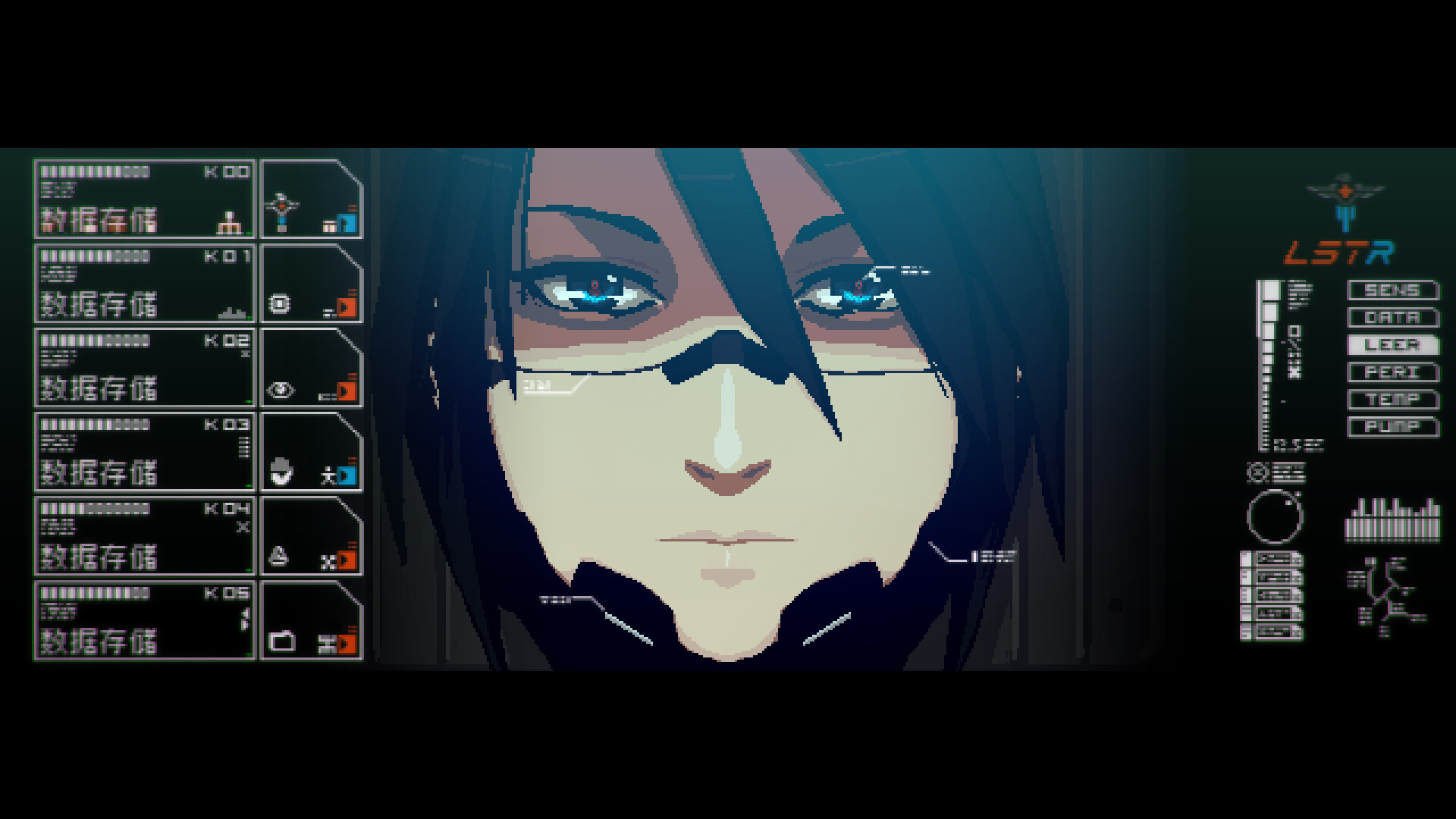  Resident Evil meets Hideki Anno meets Hideo Kojima. A sublime blend of horror, science-fiction, existentialism, and lesbian robots. The nature of being and of self, and how far one is willing to go to save the person they love, are questioned in this dreamlike journey where the timeline is nebulous, your consciousness can travel through a VHS tape, and industrial space installations are suddenly getting quite flesh-covered. Signalis' direction is powerful and daring in a way that most games could never hope to be. It is brutal, it is in your face, it obscures itself, it will throw loud text and harsh distortion at you, with quick cuts, flashes, and sudden changes in perspective. It doesn't just invite interpretation, it demands it from you. Now, this is a tribute to the survival horror greats of the original PlayStation, such as RE1 and Dino Crisis, so you will have to get used to very limited inventory space, conserving your ammunition, running past enemies, and lots of locked doors. This type of game isn't for everyone, but for those who love that kind of thing, Signalis is exactly what you want. It's weird to call Signalis refreshing when it is such an obvious replication of very specific games from the late 90s, but real talk: Signalis is the best indie horror game in a long, long time. I'm so tired of every indie horror game utilizing cheap scares, Lovecraft mythos, and a reliance on a Big Twist(tm). Signalis is a bomb of a balm for the weary, destroying every NightCry, every Daymare, every pointless 3 hour walking sim where a thing suddenly appears and runs at you very fast. There will not be a game like Signalis for a long time, but I cannot wait to see what Rose Engine does next.   After wasting my time with four bad Trails games, NISA finally wised up and brought me the good Trails again, with the pre-rendered chibi sprites in PS1-looking 3D environments. Hell yeah. No more dumb high school bullshit and 'free time'. Just low stakes peacekeeping and the occasional world-threatening monster, just how I like it. You play as a group of misfit fake-cops (the only acceptable form of cop, I suppose) whose job is basically to mimic the Bracer Guild in order to repair relations with the police as a whole (okay, maybe not acceptable then). It's a framework basically designed to continue the format of the Sky trilogy, but with a new cast and setting, a capital city you'll become quite accustomed to as it is where a ton of the game takes place. If you prefer going on long journeys, Zero will not have much for you, as everything will be within reach of the city. But if you got, perhaps, a little exhausted of running down every NPC all over the world every time a plot beat happens... well, the NPCs are significantly more condensed here. If you like the griddy combat of the Sky series, it's here, as is the Quartz, Quartz exchange and slot systems. Think of Zero as an iteration rather than a dramatic reinvention for a new series. You'll even see some Sky characters show up in this story... some pretty important ones. The ones you're thinking right now, yep. Them. Everything is snappy, from being able to fast travel anywhere within the city at any time (much like an Atelier game), to having separate turbo speed settings for combat and out-of-combat gameplay. Multiple playstyles are valid, as the game leans just as heavily on arts weaknesses, as crafts and s-crafts are very powerful themselves. In addition to being a solid slow-burn plot, the small cast is likeable and fun, and it doesn't balloon out into a crowd like previous games (especially Sky Third!!). The game does tread into the supernatural, something you'll want to know ahead of time so that you're not confused by the intro to the game seemingly being way out of Trails' usual territory. But for most of the game it's the kind of easygoing episodic stories building up to serious missions that you enjoyed Sky for, from sorting out local gang misunderstandings, to helping kids out of the sewers, building up over time to you infilrating a black market auction, and dealing with the mafia. There is also a major major character/plot arc from Sky that gets resolved in Zero, making the game a must play for Sky fans. I'd say "they don't make RPGs like this anymore", but, looking at the landscape this year... RPGs are in a really healthy state now. We're a far cry from 15+ years ago, when RPG developers lamented that they weren't prepared for the Xbox 360 and didn't have the resources to put towns in their game. Triangle Strategy, Chained Echoes, Harvestella, Jack Move... things are looking really good for this genre. No shade on any of them that they were all upstaged by an English release of a former PSP game; Trails from Zero is just that good. 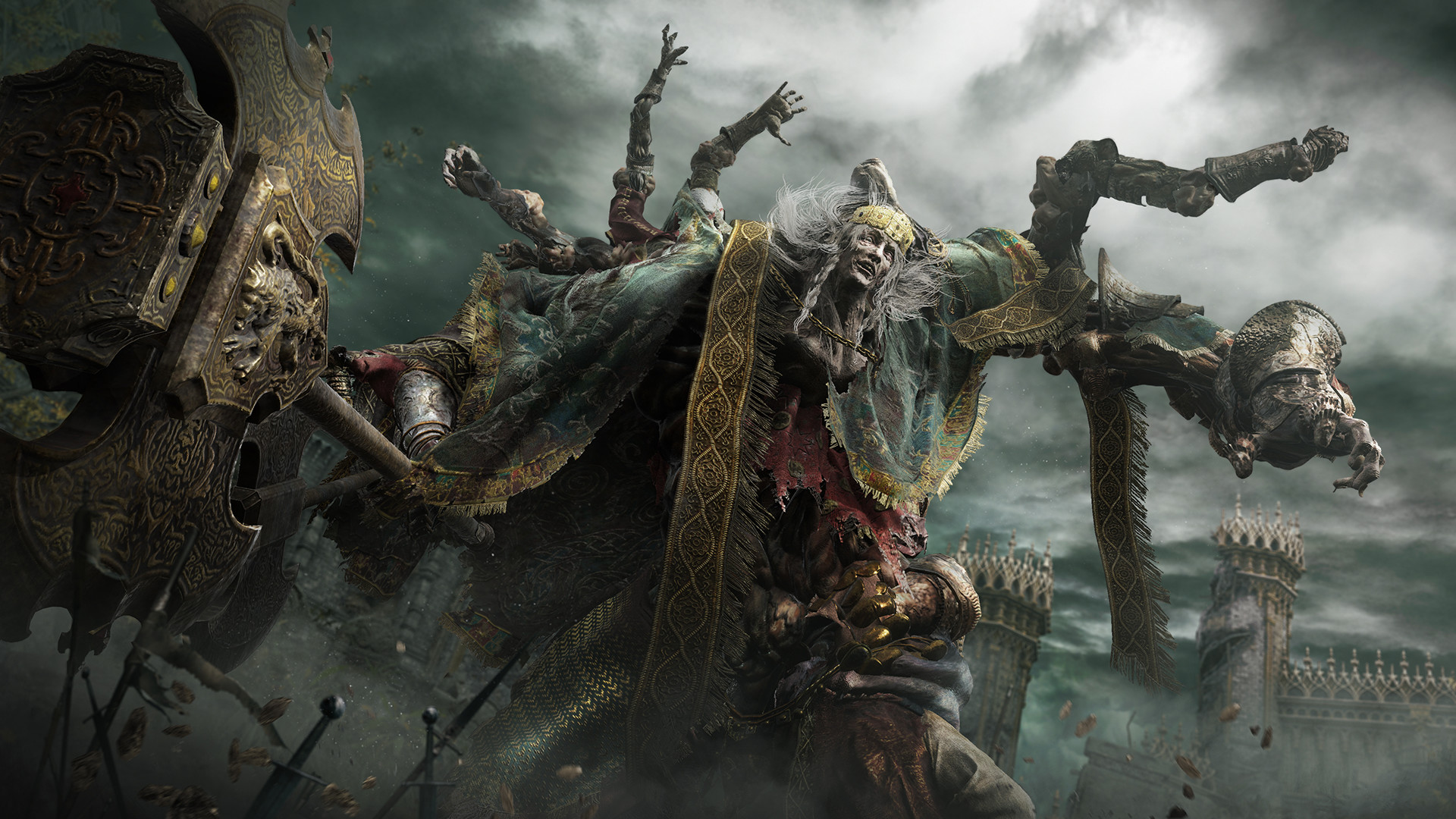  It was wild to me to see some people try to dunk on Elden Ring's art direction. We talking about the same Elden Ring? The one with the underwater starry sky? With the incredible vista awaiting you as you leave Stormveil Castle and see Liurnia of the Lakes? The giant volcano you climb bit by bit?? I'm gonna get my negatives out of the way first so people know why I didn't put this at #1. The biggest thing is, I've never been fully in love with Souls combat. I'm an Ys fan, I love my combat fast and mashy. If I can't swing 5 times per second as I whirl around like a maelstrom pinball of sword slicing, I'm always going to be at least a little put off. And Souls combat is sort of, the opposite of that. You can't mash, every swing is deliberate, and you have to wait for your windows to open. UGHHH can't I just mindlessly whack at things! Moving the tongue away from the cheek, I did have one other issue with the game, which is the amount of reuse in the game. All open world games have it, and I know Elden Ring couldn't avoid it, and From games have had it in the past. But because of the sheer size of the game, you notice it more. If it was a 40-50 hour game, it'd be one thing, but this is an 80-90 hour game. I don't need to fight those Godskin dudes multiple times. Or the valiant gargoyles. Or the burial watchdogs. And the catacomb dungeons and tunnel dungeons all blur together in my mind. But if you push the side content aside, all of the main and legacy content is incredible. I can't stand open world games and this is the best open world I've ever seen. The regions are all very unique, from blood red skies and bone-covered deserts, to ghost filled lakes, to a temple in a massive tree you slowly scale your way down. The legacy dungeons are the best dungeons that FROM have ever created, with some incredibly epic fights. Fighting Starscourge Radahn with a mob of ghosts as part of 'the hunt' is a truly special and memorable moment. Wielding a giant magical gently caress-you spear to slay a serpent. Putting Margit's foolish ambitions to rest. I'll get out of the way now because other people can explain why Elden Ring is fantastic far better than I could. The only thing keeping this from #1 is my own personal preferences and bias, that's all. Congrats to FROM on the SA GOTY.   Possibly the game with the largest discrepancy between public reception/Steam reviews, and my ranking on this list, Souldiers singlehandedly rescued the reputation of the Metroidvania this year for me, after so many got delayed, after Ghost Song wasn't quite the slamdunk I was hoping for. drat what a good game. After being betrayed on the battlefield, a group of medieval soldiers get discovered by a valkyrie who sends them to another world (that's right it's isekai babyyyyy) with the promise of going to Valhalla if they assist the valkyries. Over the course of the story, though, the MC discovers a town full of different fantasy races living in immortal harmony, not interested in following the valkyries. Then people start getting possessed by some weird scarab creatures, including one of the valkyries themselves. Where did they come from? What is the Guardian's deal? What is the nature of this place that the soldiers have been taken to? Well, being honest, story is not really the reason you play a Metroidvania but it's at least a little interesting. The main reasons you play a Metroidvania are for the exploration, the ability gating, and the vibes. And this game's got 'em all! Souldiers sports a beautiful PS1-era 2D look, with fluid spritework and intricately detailed pixel backgrounds. It also has what I would call "SNES+" music, taking from the SNES soundchip and augmenting it with additional orchestral instruments and synths. It's a very cool sound and, frankly, it's time for games to stop all doing NES chiptune already. The biggest positive is its exploration, however. Souldiers' dungeons are MASSIVE, sprawling inter-connected regions with shortcuts to unlock, abilities to gain that help you reach new places, hidden & destructive walls, lots of fast travel points (also your save points) and some sort of interesting dungeon gimmick. For example, at one point you are sent up to a flying fortress, with visuals and music that call to mind Mega Man X, and it has little helper robots you're powering on and escorting around so they can help open doors. Another dungeon is a hidden laboratory under the city sewers that has keycard doors everywhere, and you're expected to upgrade your keycard at certain terminals in order to open them. In a lot of dungeony Metroidvanias, you'll usually find a map in a chest that shows you everything. To keep the player from being overwhelmed, Souldiers meters out your map discovery by giving you one map fragment at a time in chests, mostly detailing the current area of the dungeon you're in. In addition to movement upgrades, there are also tons of throwables you can find in special chests (sort of the Castlevania sub-weapons of this game). These range from basic bombs, to electric javelins that ricochet off walls, to throwing knives/axes, to a little robot pal. These cost 'ammo shards' to use, which are dropped by enemies and not much different from hearts in a Castlevania game. There are also HP and MP upgrades to find in secret alcoves, which award 10 and 7 respectively. The game does have leveling, which increases random stats by 1 (HP, MP, ATK, stamina, skill points), but only a few at a time, which makes finding those HP and MP upgrades still very useful. You have various potions in the game such as healing and stamina potions, ailment cleansing potions, regen vials, etc, but only a certain amount, which you can increase by finding pouches in dungeons. And then for the abilities themselves... there are movement upgrades, such as double jump, wall jump, air dash; and then there are elemental orbs which augment your attack as well as activate certain devices that require a certain element (electricity powers up a robot, for example) and many enemies and bosses are weak to elements giving a little bit of a Mega Man feel (but with a sword). This wide amount of collectables and unlockables makes dungeon exploration highly rewarding as any red or blue chest could have something cool or useful in it, while plain chests can have money or potions. Now, the combat itself is fine, it won't win any awards but it is decently uptempo. You have a dodge roll with iframes, enemies have colored tells to let you know if an attack can't be dodged or blocked by your shield. The default Scout class has a sword & shield which is what I chose, and there are block and parry options, although I haven't had a ton of success with the latter. The dodge has a brief cooldown so it can't be mashed, which means you do have to have some timing and rhythm, but how much probably depends on what difficulty you choose (I chose the default, the 2nd of 4 difficulty levels, and found it well-balanced). Souldiers is the full package; it's fun, it's big, it looks and sounds great, and there's plenty to explore. At launch the game was very buggy and apparently unbalanced, which may explain its Mixed grade on Steam, but playing it on the Steam Deck this past week, whatever problems other people were having, either I'm very lucky or it's all been patched and addressed, because I had a fabulous time with this game and couldn't put it down until it was done.   If there is an award for "most highly-anticipated release to be forgotten about", Cuphead's long-awaited DLC has to be at least one of the nominees. 5 years in the making, Last Course adds a new island to the game with all-new bosses and challenges, hand-animated with the same love and care as the original game, with more of that bombastic jazz and big band soundtrack to pump you up. Recognizing what people loved and didn't love about the original, Last Course is all bosses, no filler. No dull run & gun stages. Just a dozen bosses to fight, including a secret unlockable boss if you solve a puzzle on the world map. These bosses range from a giant literal cowgirl fighting you from inside of a saloon, to a squad of bootlegging bugs and spiders, to an aereal dogfighting team. Each new boss is a wonderful surprise, with each phase offering up something incredibly creative. I was not expecting the cowgirl to... uh... get sucked into their own machine and become cooked and turned into sausages. There is also a string of special bosses that can only be damaged by parrying, and though one of them was kind of a dud, the rest were pretty legit, and a great way to practice your parrying skills, while you'll definitely need for some of the primary bosses in the DLC campaign. While it is not very long, in a year full of affordably awesome games, The Delicious Last Course is yet another great sub-$10 experience. It's every bit as good as the original, and all killer no filler. 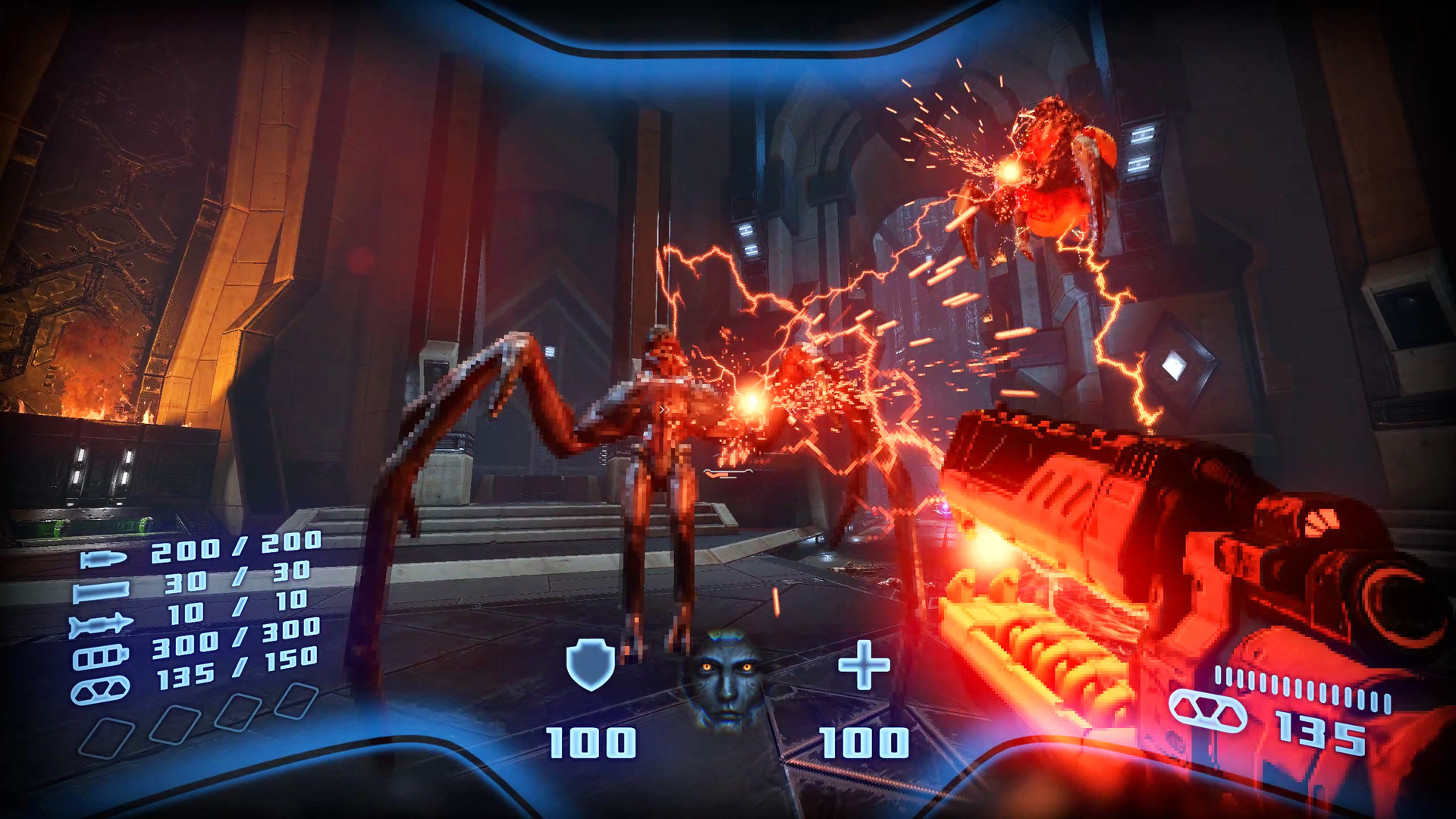  Well, hell-fuckin-lo there, Prodeus. I've waited for you ever since the Early Access release had people raving, and you were definitely worth the wait. It's an absolute rampaging romp of a shooter with powerful weapons, secrets galore and style for days. Prodeus achieves its slick look by pre-rendering its 3D enemies and giving them and your weapons a wickedly crunchy look to them. Combined with the absolutely brutal level aesthetics, this is a game that exudes a powerful aura of rage. Even more than RAGE(tm)! Much bellyaching has been made about the game's checkpoint system, which puts you right back in the action rather than restarting and respawning everything. I don't care. It doesn't... it literally doesn't matter. Who cares. Nobody's watching you show off your sick K/D ratio. This is a game to whip around destroying everything, not do a perfect no-damage run. Just have fun!! It's loving fun!! Okay, sorry about that. I really like the many vistas and setpieces on offer from Prodeus, like a level where you are constantly evading a sniper's nest, or a downhill mountain climb where you get the sniper rifle and YOU ARE THE SNIPERS NEST!! Or a trip to an alien world where the topography of the level design is literally changing all around you as you progress. The game is full of cool ideas like this, and each level adheres to the design ethos that makes old school FPS design age so gracefully in these modern times. If you go down a route to get a colored keycard or trigger a switch, the route will dump you back out at the crossroads before you went that way. Perfect. Yes. Good. We love that here. The game has an SMB3-style overworld complete with side activities like a shop and time trial race levels. There's a currency in the game that you use to acquire new abilities and upgraded weapons at the shop, and it can be find in many of the secret locations of every level, as well as being a prize in the race levels. These abilities include Metroidvania staples like the double jump, and more powerful versions of existing weapons. You can then go back to earlier levels with the double jump, and find more secrets!! It's cool!! This is a dev that put everything they love about games into one game. OK, I will not just be a geek the whole time. I will say this. The game asks for your feedback after every level, and if you repeat that level, it doesn't remember what you voted the last time. C'mon guys. Most people don't want to do that anyway, it's friction keeping them from more action. But at least remember what people voted! Your star rating ostensibly would guide the devs into knowing what works and what doesn't work and would affect future campaigns, but it's hard to know how much it's going to really matter if the game has the memory of a goldfish, and they also have to take into account ratings from console players and Gamepass players. This is me, throwing my hands up in the air. I don't know! I just know this is a really good game! It looks really cool and it's a hell of a lot of fun. That's honestly all I really need from a retro shooter.   Despite all the japes and the jests over the years, I am a big Nintendo fan, and any time they release a 3D platformer, I'm immediately invested. Kirby & the Forgotten Land doesn't hit the highest highs of the 3D Mario games but it is easily the best Kirby game released in a long time, and utter chaos in co-op. What makes Kirby work this time is not even the new features like Mouthful mode, but how those features are used to tuck surprises into the levels. It's a pretty smart tactic to go backwards as soon as you find a Mouthful ability, for example, because there might be a hidden path or collectable hidden earlier in the level that requires that Mouthful form to access. In addition to finding Waddle-Dees, there are fun little gachapon toys as well. And the more Waddle-Dees you bring back to town, the more the town grows and offers additional minigames and side activities such as fishing and tilt-mazes. The Forgotten Land also incorporates objectives into each level, most of which are hidden, in order to get more Waddle Dees. Each level clear will reveal one of the mystery objectives, but you can also just discover them through playing through the level and trying things. Taking down posters, eating certain types of food, to give a couple of examples. It naturally invites replayability but I also think there's a lot of fun in trying to figure out the mystery objectives in your first playthrough. The powers themselves are great this time around, as they not only are strong out of the box, but can be upgraded into different forms at the Blacksmith to become even more devastating. The world map hides secret stages that focus on each one of these power forms and act sort of like Mystery House challenges from Super Mario 3D World, which was another nice chunk of content to have and shows a bit more of the level design prowess of HAL Laboratory, something that we have not really seen from them in the 3D space. Granted, nothing in this game is super difficult, as it is designed to be accessible to all ages, but getting top times on some of these stages will require perfect precision. To offer one nitpick, I played this with my roommate and the co-op was... well, it felt tacked on, because the game just does not like the second player being even a foot off-screen before warping them back to center. This is being generous as well, because I've found that 2P will sometimes get warped just by being in the bottom third of the screen depending on the camera angle. This resulted in a lot of frustration but also some real silliness as well. Personally, I would have tweaked it to be more like the bubbling in New Super Mario Bros where a character has to go all the way off-screen, OR you give them the manual option to bubble themselves. A game that pretty much anyone can get into easily and enjoy, Kirby manages to find the perfect balance; cozy without being sleepy, deeper than you'd think and wider than you'd expect.   It's so many little things. The monument to a fallen soldier with "FAKE" spraypainted on it. The 'headdrives' that attempt to simulate an uploaded consciousness but speak robotically and inaccurately, because of technology that has clearly been rushed to market to prioritize profit over its actual benefits to mankind. It's the homeless being shoved aside to make room for a hipster puppet show. So much of Norco is too real, it's almost scarily uncomfortable. More than any other game this year do the characters in a setting feel like real people who have lived a lifetime. Even the oddest or seemingly smallest roles have something poignant or profound to say. And all this while you're palling around with a Juggalo detective. Norco takes the game language of an ICOM adventure and translates it into a stunning narrative experience that walks the fine line between bleakness, despair, surreality, and magical realism. Is there hope in this game? Not much, it's quite grim. Is it still silly and light-hearted at times? There's a cult of teens LARPing as knights templar all named Garrett. Does the destination matter as much as the journey? You may get tired of this always being the case, but no, the destination doesn't matter. In fact, the game predicts an ending for the protagonist before you even conclude the story (which, admittedly, has an ending that feels a bit rushed and inelegant compared to the lengths of prose that led up to it). But don't go into this game looking for an investigative whodunnit where you solve all the mysteries and feel super smart. You're not Sherlock. You're a young woman who has come home after drifting and tumbling through life, picking up the pieces of your family's shattered lives, learning how to process grief, how to escape hell, the nature of faith and belief, the impermanence of memory, and living with the knowledge that you will likely continue drifting and tumbling after the credits roll, because there are no tidy endings in the real world. And that's without even getting into the setting itself, which is so well-realized that you'll develop a nostalgia for a place and time you've never been (well, unless you did actually grow up in Louisiana). This is a game that invites replaying, that requires some digestion, and its metaphors and mindfuck sequences paint such interesting word pictures and leave enough to the imagination that I'd be interested to see how people interpret all of them. There's just one really odd thing about the game that I don't really get. The game has combat sequences that feel like the barest bones of a turn based JRPG. They're extremely basic, involve some repetitive QTEs, and.. I just don't know why they're here. They do spice things up, but they're so superfluous. It feels like something that was a part of the concept stage that just never managed to be cut throughout the production process. I think you could cut the combat and it would be just fine, maybe you save it for THAT ONE SECTION and it'll stand out more? That's just my feelings, at least. But Norco is a game that really does push the point and click adventure forward in a way that resembles the later era of Infocom games as they advanced the medium of interactive fiction. This is a special, special game and it deserves to be played by anyone that has a passing interest in the genre.   No game kept a smile on my face more than Tinykin this year. Created by the team behind Splasher (one of the low-key best 2D platformers on Steam), Tinykin tells the distant-future tale of a scientist who wants to learn about the history of the human race and their origins. On discovering what could possibly be humanity's home planet, he winds up blinking into a very large house, in a very small body. It's Honey I Shrunk the Platforms, with an extra helping of Pikmin, and it's a real treat. While Splasher was a twitchy test of reflexes, Tinykin is about cozy exploration. Each new room you enter is absolutely massive, full of activities, people to help and places to go, which you'll reach with the help of your new tinykin friends. These tinykin can carry large objects, explode, and form bridges and ladders to help you traverse the many rooms of the house, each of which are humorously themed around the room's original purpose. A child's bedroom, for example, has become a theme park, while a bathroom has become a frat-like party zone. The game is drop dead gorgeous, mixing 3D environments and hand-drawn animated characters in a way similar to Demon Turf but on a whole different level. You can't get much more polished than this. Navigating these worlds is a breeze with the help of a soapboard you can whip out and slide around on, which is also used to slide up and down spider-silk rails. As you make your way around you will also find and unlock shortcuts by knocking things over, or exploding certain jail crates. Your exploration of each room thus ascends in a pleasing and thorough manner from bottom to top, as you initially see what's at ground level, then tackle little sections at a time, slowly making your way up, unlocking shortcuts, until eventually there's no place you can't reach and you're zipping all over the place. The game is a sort-of collectathon, as the ultimate goal is just to acquire the parts to a spaceship, one of which is in each room. But certainly you'll be collecting tinykin as certain objects require a certain amount of them to interact. There are also bits of pollen everywhere, which have a satisfying click sound every time you grab one, that are used to upgrade your bubble glide several times so that it lasts longer (which naturally will allow you to find the hardest-to-reach secrets). Ultimately I have very little to complain about with this one, it's just a fun and relaxing game that is pleasant on the eyes and ears, should be accessible to players of most age groups, and will keep you entertained from start to finish. gently caress I'm just starting to sound like a back-of-the-box VHS quote. I apologize. 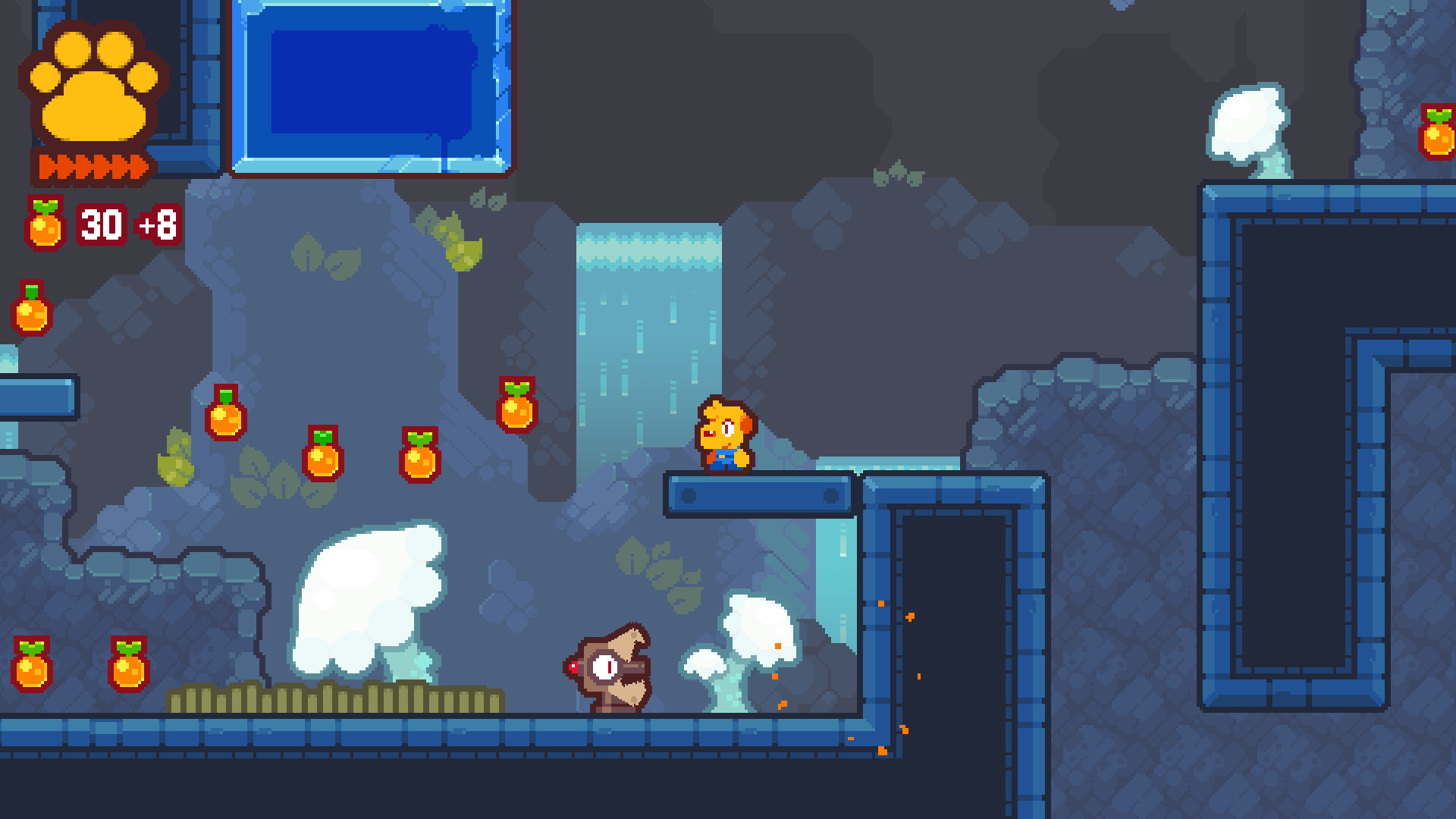  As I've mentioned before, I'm a fan of Nintendo games, and whenever I run out of them I start to look to the indie circuit, because there are a host of indie developers that have made games these past several years that could easily pass for a first-party Nintendo title. Last year I regarded Kaze & the Wild Masks quite highly, and this year I've played something even better. Grapple Dog looks like a long lost Nintendo DS title straight from Nintendo themselves. It has thick, Nitrome-like spritework, extremely good music, excellent level design, a content-packed game structure, and devious post-game challenges. The music is a blend of Jet Set Radio electrolounge and Jazz Jackrabbit chiphop, and I only wish there was more of it! Having a game built around grapple would suck if the grapple was poorly implemented, but it is perfectly executed and, combined with wall jumping, allows you to pretty much get anywhere you want to, which allows purple gems (the equivalent of Mario's Green Stars) to be tucked away in all sorts of fun places. These gems are needed to unlock boss doors, but the game is completely fair about how much you need to collect, as it's only the post-game challenges that have steep unlock requirements. In addition, there are bonus stages of various kinds to get more gems, such as sprint-to-the-finish stages, collect-em-all and fight-em-all stages. Yeah, a 2D platformer is my #2. I enjoyed it that much! With Nintendo less and less likely to make purely 2D sidescrolling games in the modern era, it falls on indie developers to fill in the gap. Well, that hole was meant for Grapple Dog, because it fills the space completely. 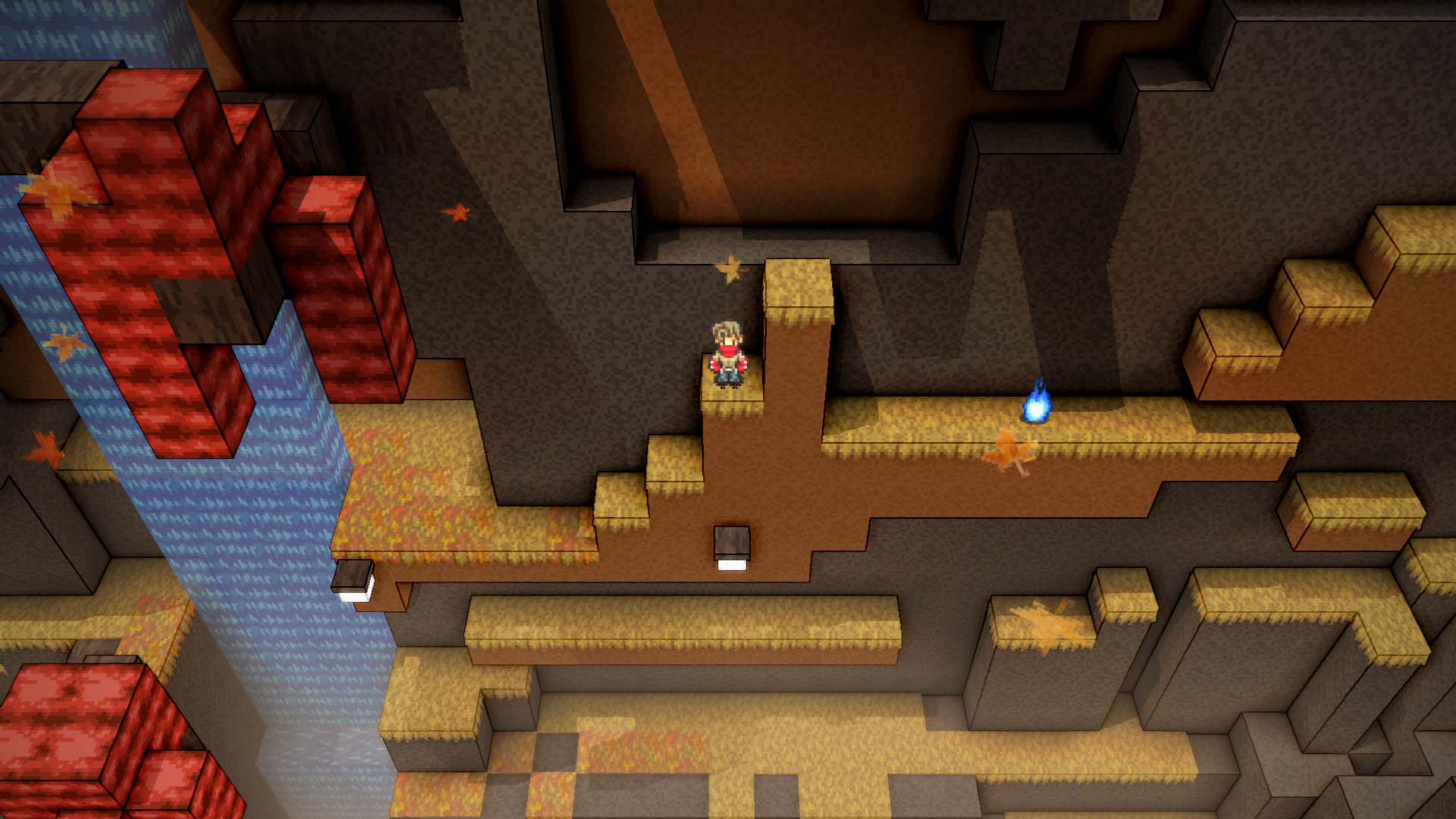  For me, what makes open world games promising is the idea of picking a direction, going in that direction, and finding something interesting. I know that's pretty basic and a typical design mantra, but it's amazing how many open world games just completely gently caress that up. I don't need a thousand question marks to run over to find out that they're a generic bandit camp activity that looks like every other bandit camp activity. Regions often look quite identical with very few defining features or landmarks, and even if they do have them, the geography of them is homogenized-- possibly so that AAA publishers ensure that more players experience the majority of the content. But it's not always that way. FROM SOFTWARE puts their trust in the player that the reward will be worth the risk of making exploration challenging and diverse. Nintendo places bespoke and unique content in many places that you might never experience. Crystal Project is a one-man indie RPG that patterns itself after Final Fantasy V, XIV, and Bravely Default, but with a world design that calls to mind Minecraft and 3D platforming. It is a touch crude; its big blocky cubes that make up the world will put some people off, and sprites in the game were from RPG asset packs. To say that it's "programmer art" would be a solid nail on the head. But give an hour or two of your time to the demo and you'll see some of the magic that Crystal Project offers, and a lot of it goes back to that design mantra. The game starts you off with limited knowledge, just a single path forward and some tutorial NPCs that teach you about basic game mechanics. Once you've reached a rest stop, at that point, the game takes the ankle bracelets off. Sorta. You are ostensibly given free reign to run about wherever you want, as long as you can reach it. This is accomplished via platforming, but also is augmented later in the campaign with rideable mounts that offer additional Metroidvania-like abilities such as higher jumps and gliding to reach new areas. But you don't have those yet. You pick a direction and maybe you find a small encampment dug into a crevice with vendors, maybe you find a cave with pools of water that leads to a small dungeon, maybe you find yourself at the beach. During this early part of the game, you'll discover a few things about Crystal Project. One is that its battle system is completely transparent. You will always know the turn order, the damage your attacks will do and your accuracy, the enemy HP, the attacks the enemies will do and their damage, whether a status effect will work on either side, how much aggro your party members are currently pulling, and whether an insta-kill skill will one-shot an enemy. It is exceptionally good, borrowing elements of FFX and FFXIV. The second thing you'll discover is the job system. Behind most bosses is a Crystal which will give you a brand new job to play with (much like Asterisk fights in Bravely Default would award you new classes). These jobs can be changed at any checkpoint, and you will be expected to do that, because attempting to run the game with one party configuration will usually end poorly for you against the many big fights in the game. Jobs range from your average tank, magic and fighter classes, to more esoteric (but familiar) ones, such as jobs with time-based skills, a ninja class that requires a decent amount of setup but can be absolutely overpowered, and a scholar class whose skills are learned by stealing them from enemies. After playing the game for several hours and getting several crystals, you'll eventually come across an area with a trial for those who have collected enough to be worthy. After completing the dungeon, you'll eventually wind up in the capital city of the game, and it's at this point that you realize everything you've just done was still the prologue in a closed-off area, and you are now truly free to explore to the best of your abilities, the remaining handcuffs taken away. And you learn the third thing about Crystal Project: it's deceptively big. Some people won't love the platforming but I thought that it was a novel way to design an interesting topography that makes the regions feel uniquely different but also consistently engaging. It's also how the game tucks away the many chests littering the world. You will be surprised at how many places you can scale up if you're willing to keep looking for a part of the cliff-face that's within your jump reach, and that's before you even start utilizing the mounts which allow you to reach higher and further. This might lead you to treasure like rare/powerful gear, or healing items, or it might lead you to an entirely new area of the world. In this game there aren't a lot of simple paths... you need to actually explore and reach locations rather than just jogging to them like any other open-world game. But if you are worried about a Kingdom of Amalur-esque eternal jog, there are fast travel options. Once you activate a Save Crystal, you will be able to set it as a Home Point, which means you will be able to return to it at any time. In the interest of keeping players from getting too frustrated, the game was patched to allow three different Home Points at once that you can warp between. If an area is just too powerful and kicking your rear end, you can always warp back to it later after exploring elsewhere. You will also find shrines that act as the game's official fast travel locations, which you will be able to warp to at any time after purchasing a key item from the shrine vendor. Despite what I said about the visuals earlier, I actually think the combination of a chunky 3D cubic world and classic SNES-style spritework works really well. It's clean, the monster designs are funny, the biomes are easy to distinguish between, and readability is rarely a concern. The music licensed for the game also fits appropriately for the different regions and the different kinds of encounters. It's a good example of a developer who knows their limitations and their limited budget, being able to find assets that actually fit, something that a lot of users of, say, RPG Maker, still struggle with even in 2022 (this is not a generalization against all RPG Maker games, however, as I know there are RPG Maker games that are quite good and have smart asset usage... I'm a Dancing Dragons fan, after all). If I had to give a criticism to the game, it's the storytelling. I suppose if I'd rather have an engaging open world or an engaging story, I'd choose the former in this type of game, given the size of it, but Crystal Project's "MMO at a crossroads" narrative is at best clumsy and reheated, and at other times confusing. The final boss's motivations are just sort of belched at you and don't quite connect to earlier statements. It's just weird. In the time since I've completed the game, the developer has gone back and added additional content, from a training arena to a randomizer mode, so there's no better time to jump in. If you're wary, there is a demo for the game that covers the opening hours. I was utterly delighted by this game, and I'd love for more RPG nerds to play it. ------ And that's all I have to say about gaming in 2022! I will see you, next year, or in the Steam thread where I occasionally point out cool upcoming indie releases. Get psyched for Zeno Clash 3 folks! It's only two months away. Later!
|
|
|
|
Aipsh posted:Three 7th Guest posts and the top game is something Iíve literally never heard of? Have to love it
|
|
|
|
not game related but my favorite live action film was Everything Everywhere All at Once, and favorite animated film was Turning Red. very normie picks i know!! good luck to rarity in counting all the votes up!
|
|
|
|
Rarity posted:Ok so who's playing it in 2023 to get in for next year?
|
|
|
|
five of my top 10 didn't make the cut (souldiers, grapple dog, prodeus, cuphead: TDLC, trails from zero) but i expected that for three of them. i'm a little disappointed that prodeus didn't make the cut but w/e. i knew grapple dog wouldn't make it because it only has 250 reviews on steam. and souldiers had a mixed score and botched launch so I imagine that scared most people off
|
|
|
|
Jay Rust posted:I bought live a live but I think I selected the not-so-good story first (caveman times) and didnít go back
|
|
|
|
trying to think of the non-AAA games left that got big votes, i know there's penitment, vampsurf, and tunic. i guess citizen sleeper? i think that's it then there's the pokemons, xb3, ragnarok, horizon, and ff14 and then of course elden ring
|
|
|
|
I wonder if this is the most present-year games in a SA GOTY list. i actually have no idea 2022 list vs my list: 75. Perfect Tides - 12th 69. Harvestella - 34th 66. Total War: Warhammer III - (not interested) 65. Marvel Snap - DNP (not interested) 64. Last Call BBS - DNP (but I might in 2023) 62. Grounded - DNP (I played for a little bit, don't know if it's my thing) 61. Sifu - DNP (but I might play in 2023) 59. I Was a Teenage Exocolonist - DNP (but i will try to play in 2023) 58. Crystal Project - 1st 57. Sonic Frontiers - DNP (not interested) 56. Rogue Legacy 2 - DNP (not interested) 53. Victoria 3 - DNP (not interested) 51. Hardspace: Shipbreaker - DNP (but I might play in 2023) 50. GT7 - DNP (not interested) 46. Powerwash Simulator - 47th 45. Tinykin - 3rd 38. Marvel's Midnight Suns - DNP (not interested) 37. The Case of the Golden Idol - 21st 36. Stranger of Paradise: Final Fantasy Origins - DNP (but will play in 2023) 34. Pathfinder: Wrath of the Righteous - DNP (not interested) 33. Immortality - DNP (not interested) 32. FE: Three Hopes - DNP (not interested) 31. Tactics Ogre Reborn - DNP (not interested) 30. Norco - 4th 29. Return to Monkey Island - 13th 22. Splatoon 3 - DNP 21. Live-a-Live Remake - 23rd 20. Dwarf Fortress - DNP (not interested) 19. Signalis - 11th 18. Neon White - DNP (but I will try to play in 2023) 16. Monster Hunter Rise: Sunbreak - DNP (not interested) 15. Stray - 28th 14. Kirby & the Forgotten Land - 5th 13. AI: the Nirvana Initiative DNP (but I will play in 2023) 12. Citizen Sleeper - DNP (but I will play in 2023) 11. Tunic - 14th 10. Pokemon Legends: Arceus - DNP (not interested) 8. God of War: Ragnarok - DNP (not interested) 7. Pokemon Scarlet/Violet - DNP (not interested) 6. Horizon: Forbidden West - DNP (not interested) 5. Triangle Strategy - DNP (not interested) 4. Xenoblade Chronicles 3 - DNP (idk if I will play it) 3. Vampire Survivors - DNR (I didn't enjoy it) 2. Pentiment - DNP (but I will definitely play in 2023) 1. Elden Ring - 9th top 10 games in my list that didn't make the cut: Grapple Dog (2nd), Prodeus (6th, this surprised me, I thought it'd sneak in), Cuphead: The Delicious Last Course (7th), Souldiers (8th), Trails from Zero (10th) games I hope people give a look in 2023: Crystal Project, of course; Souldiers, Perfect Tides, Taiji, Sunday Gold, Cultic, Sephonie, Harvestella, Strange Horticulture, Blood Nova, This Way Madness Lies The 7th Guest fucked around with this message at 03:28 on Jan 8, 2023 |
|
|
|
the only reason Perfect Tides didn't make my top 10 was because i just played too many games it was 1 point away from tying with Elden Ring and Trails from Zero
|
|
|
|

|
| # ¿ May 10, 2024 21:00 |
|
excited for everyone to put zeno clash 3 (clash: artifacts of chaos) at #1 this december
|
|
|

